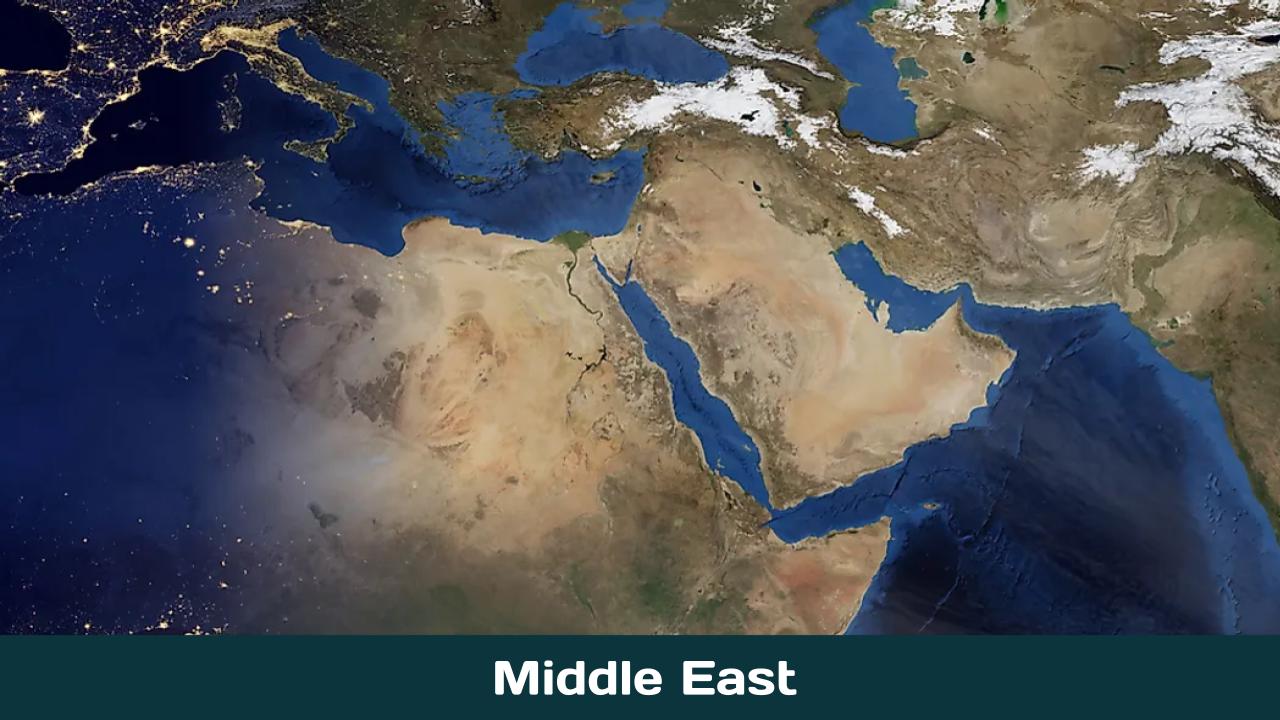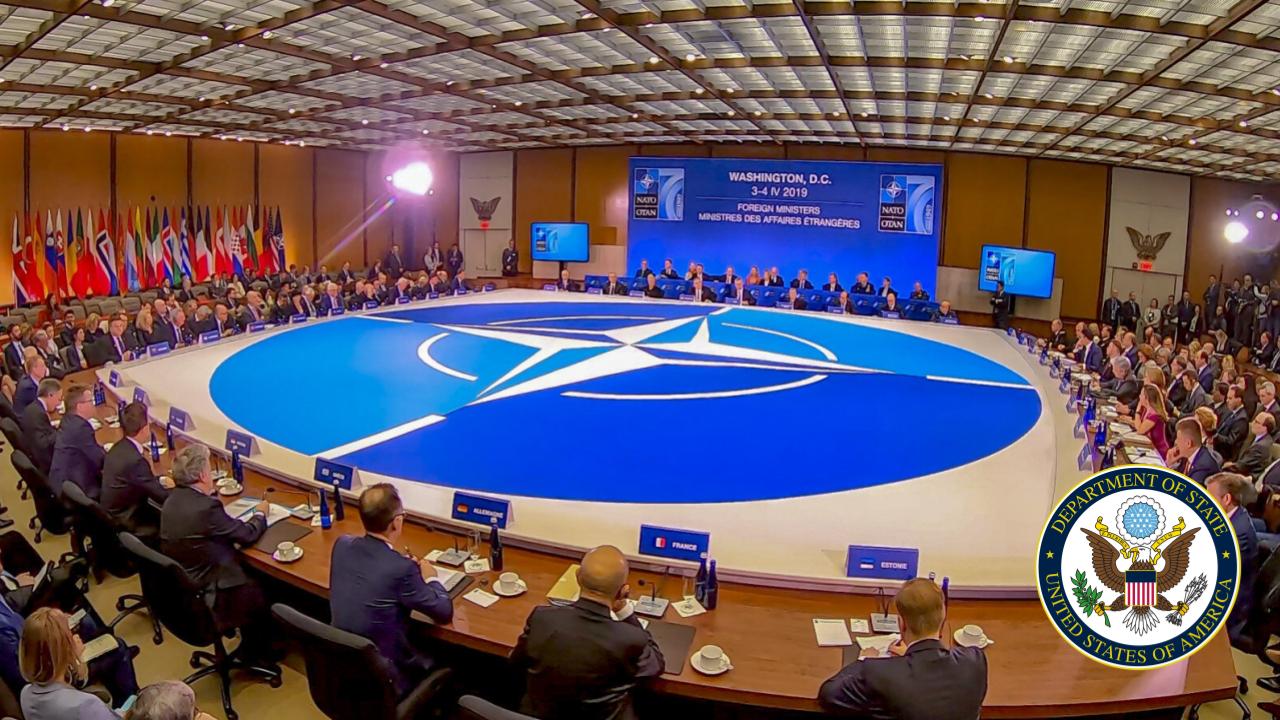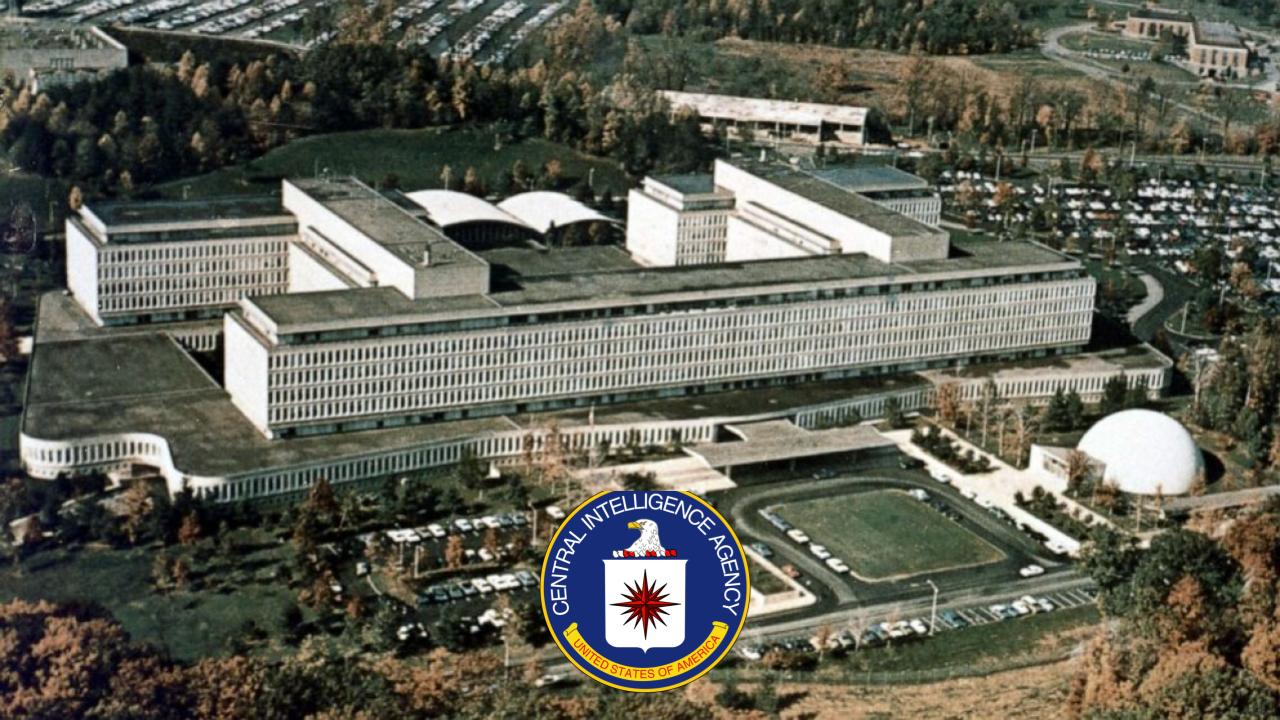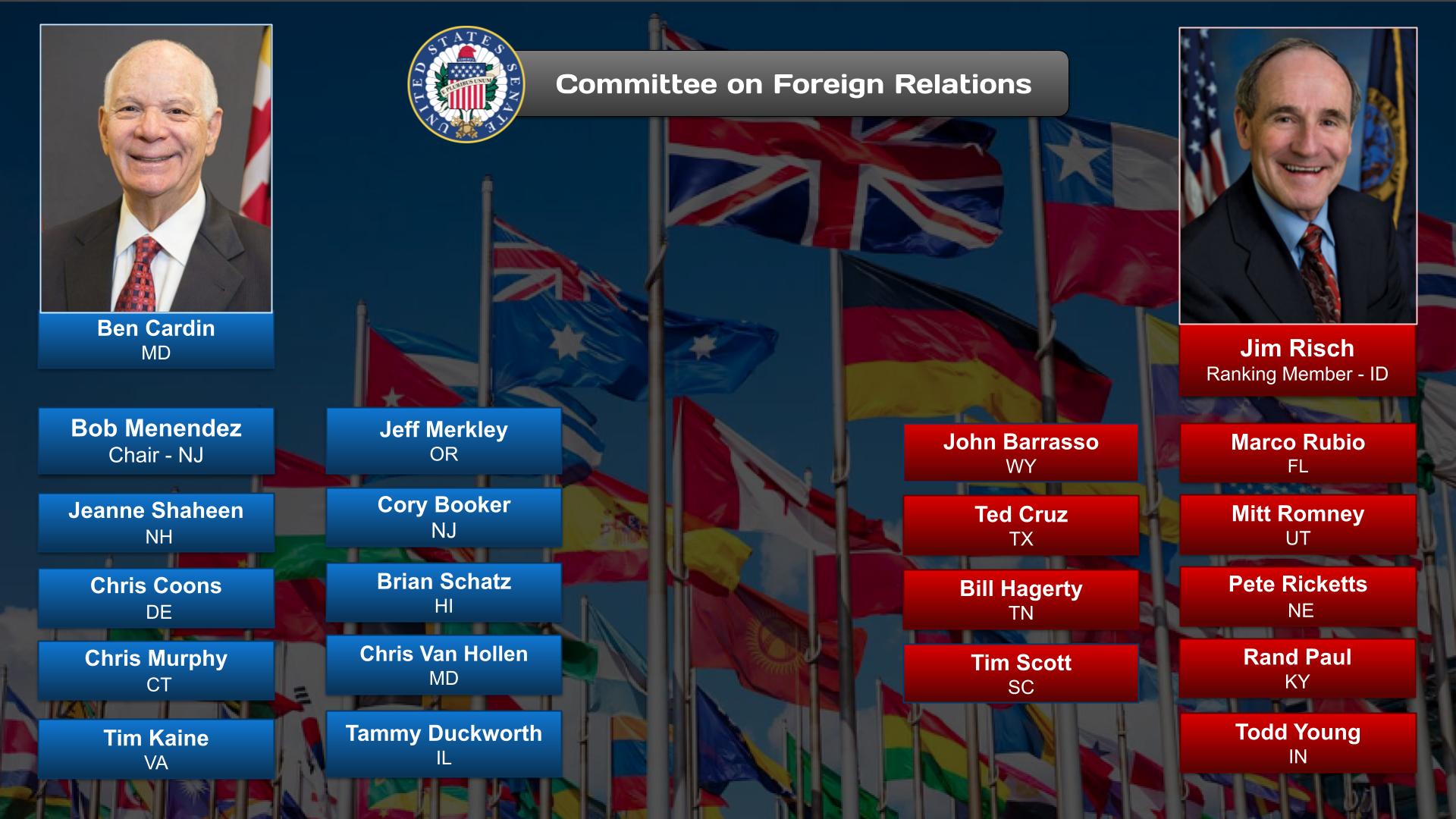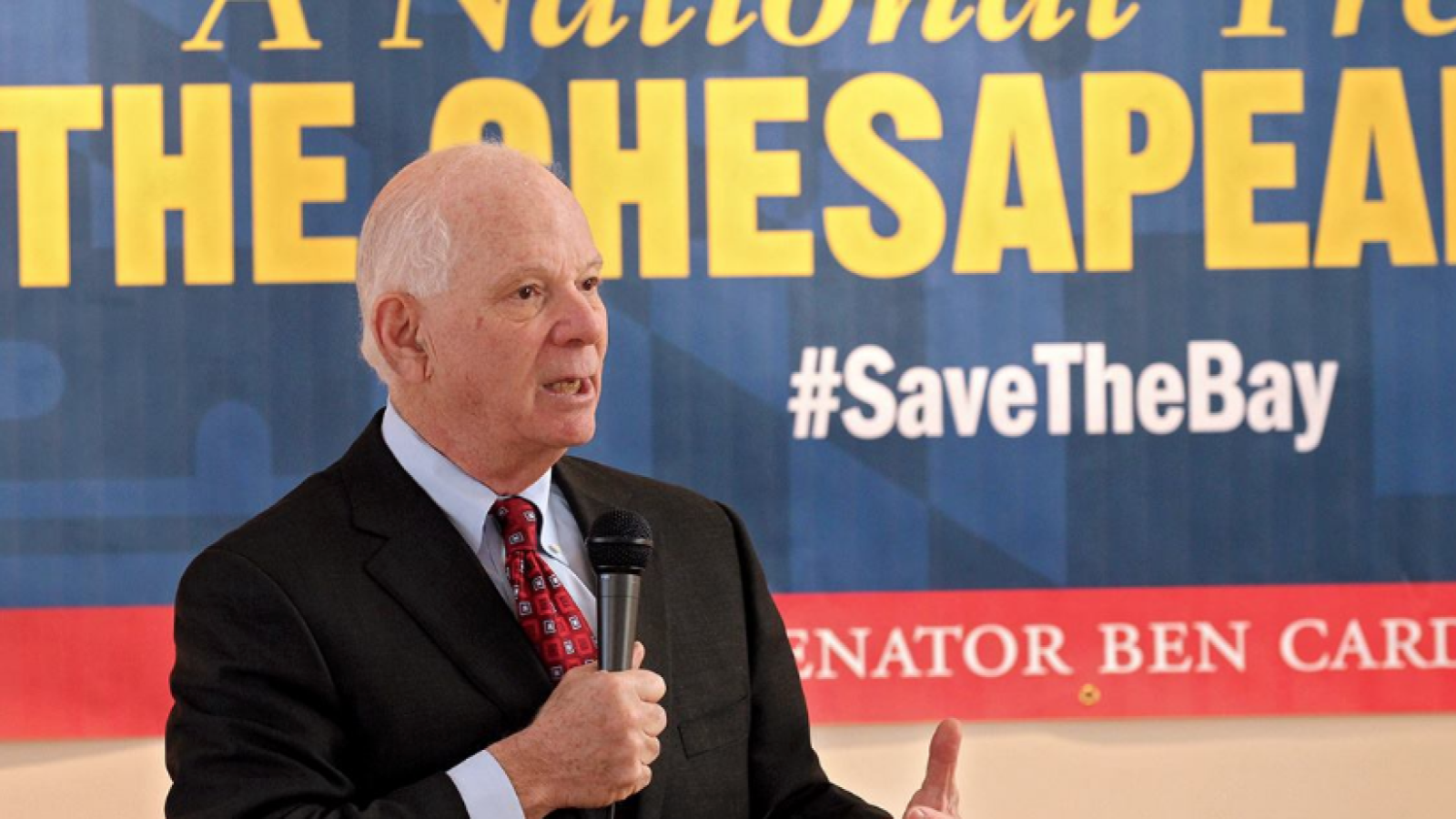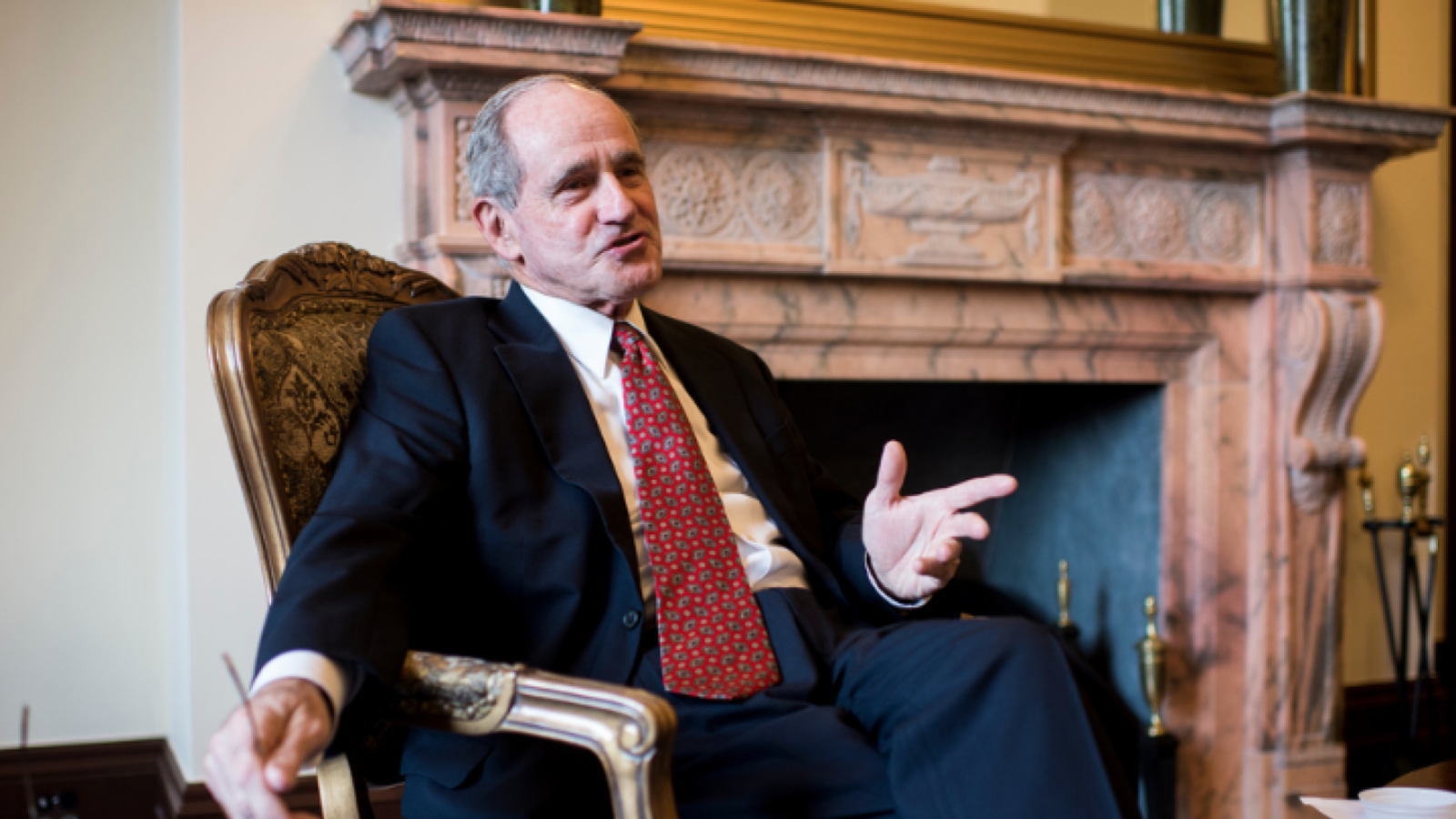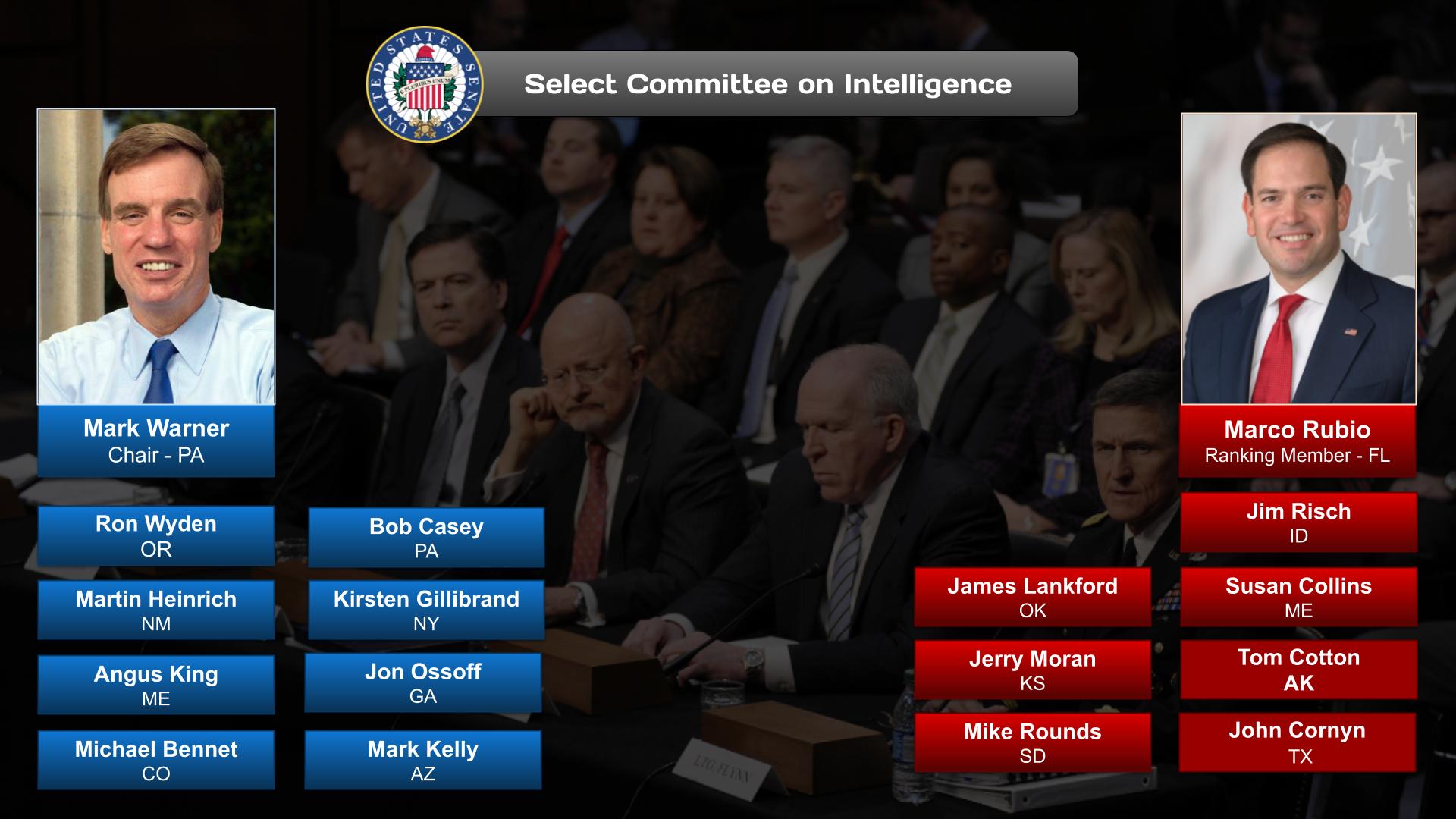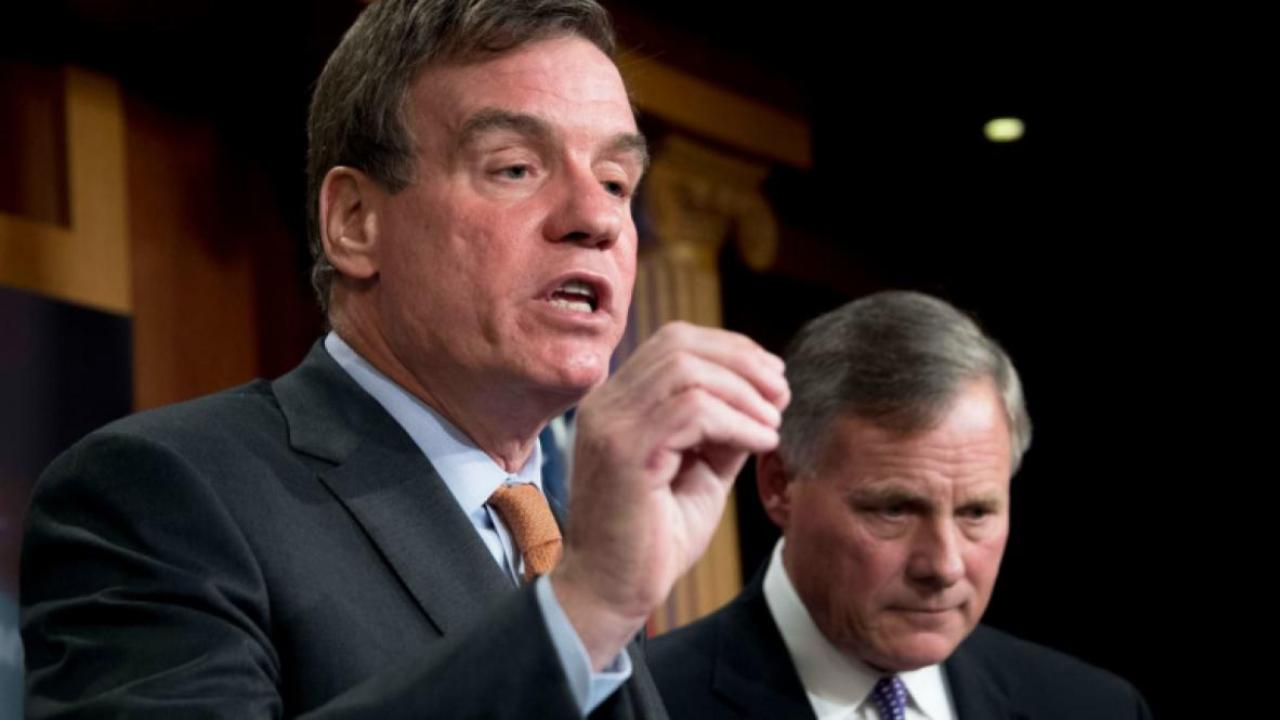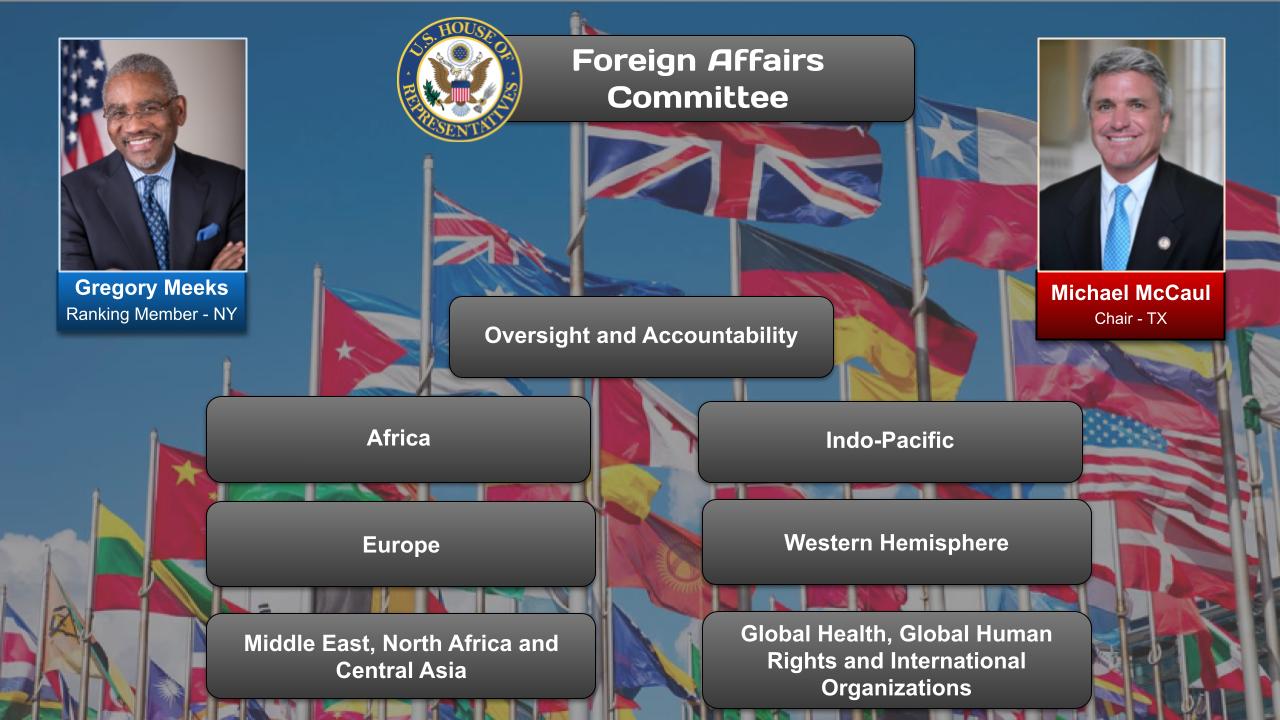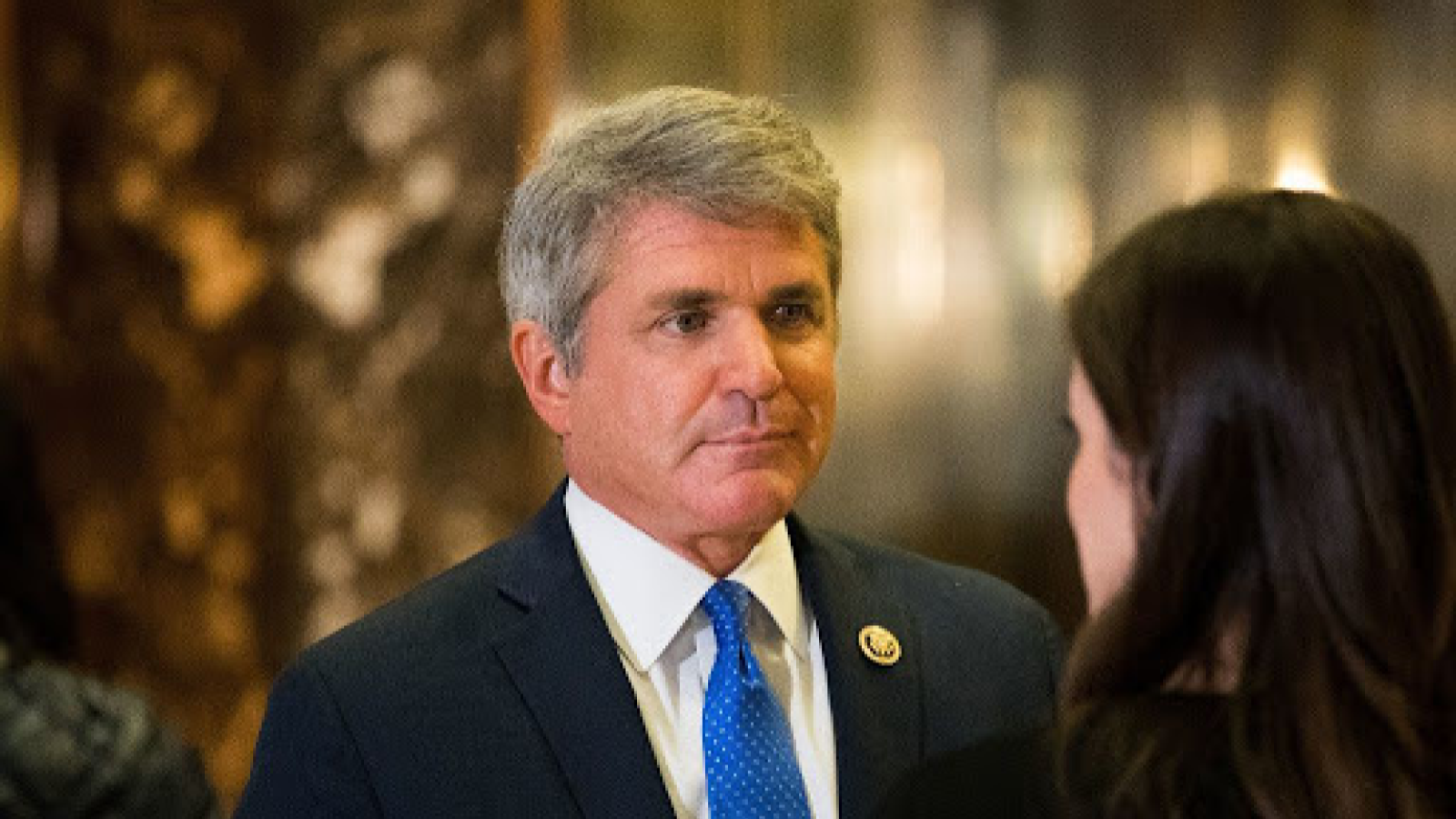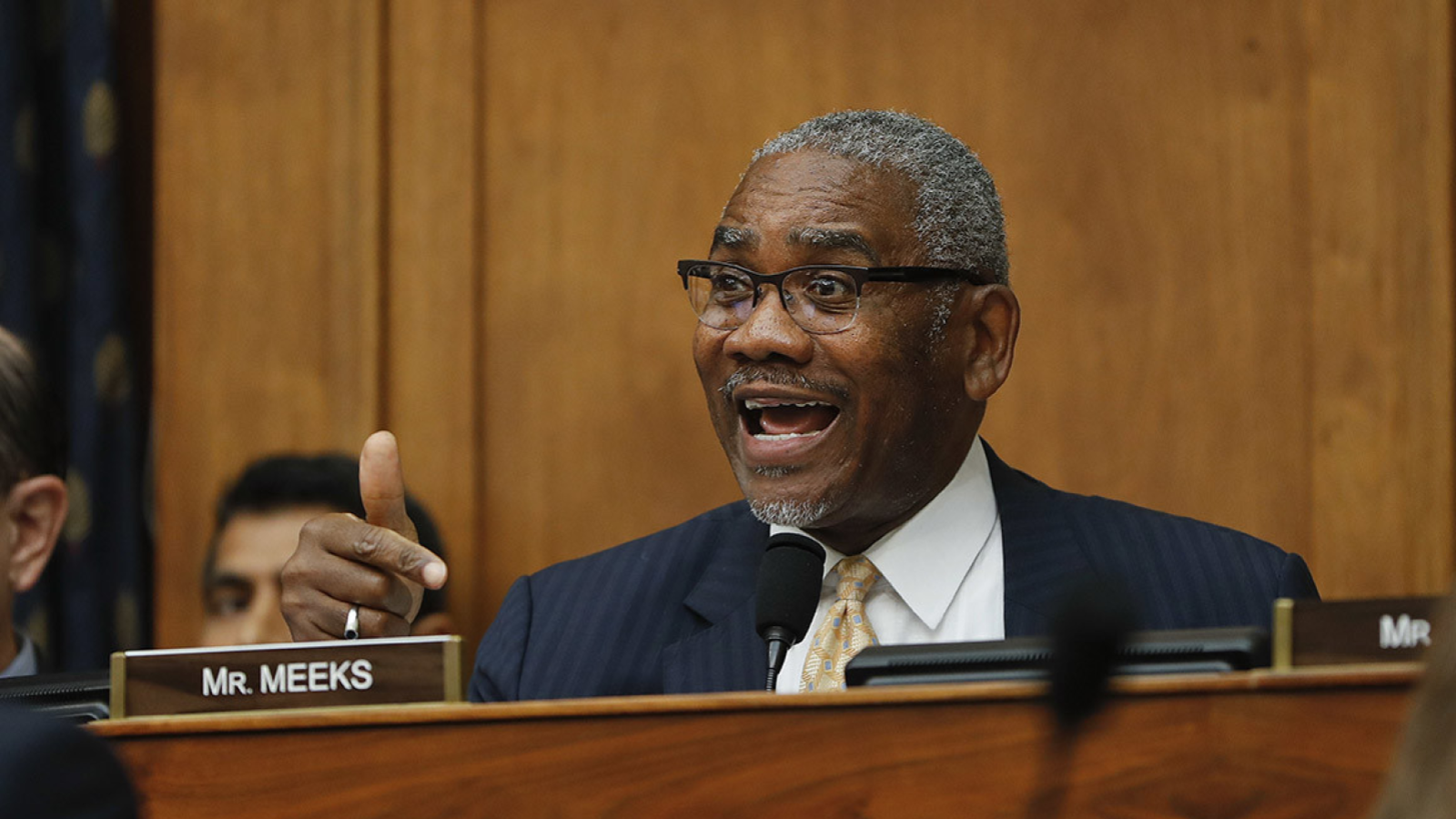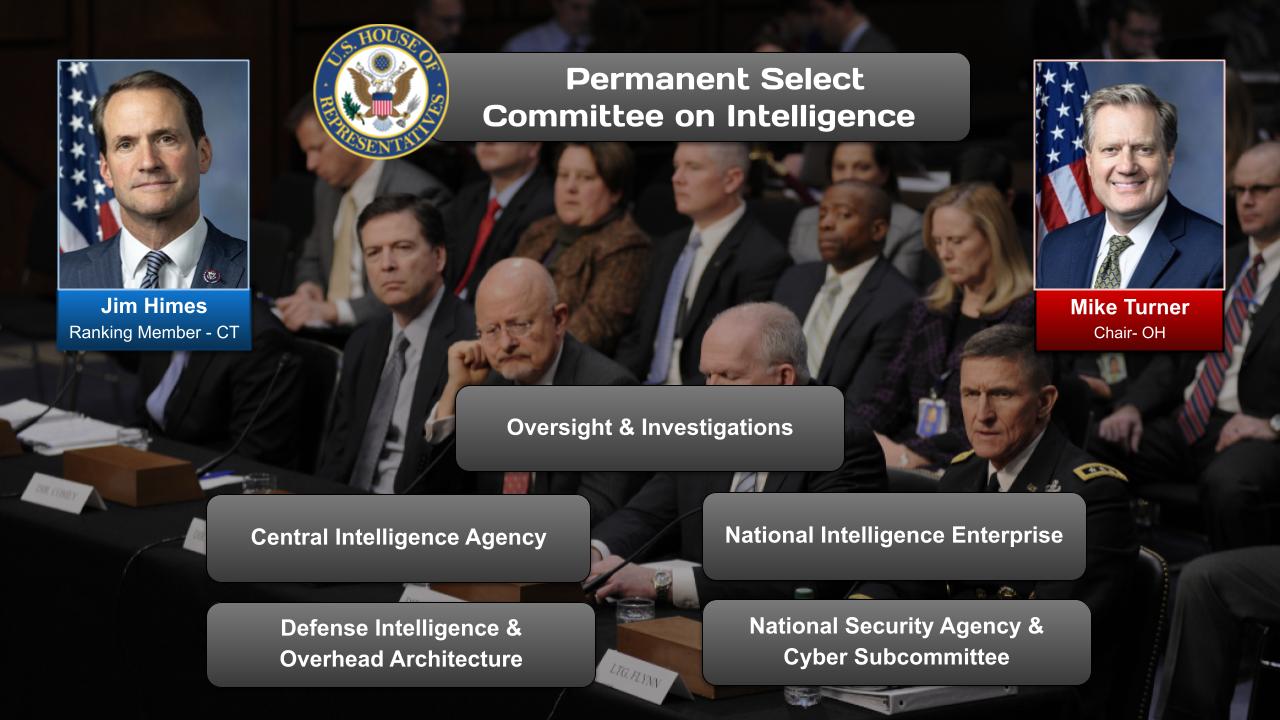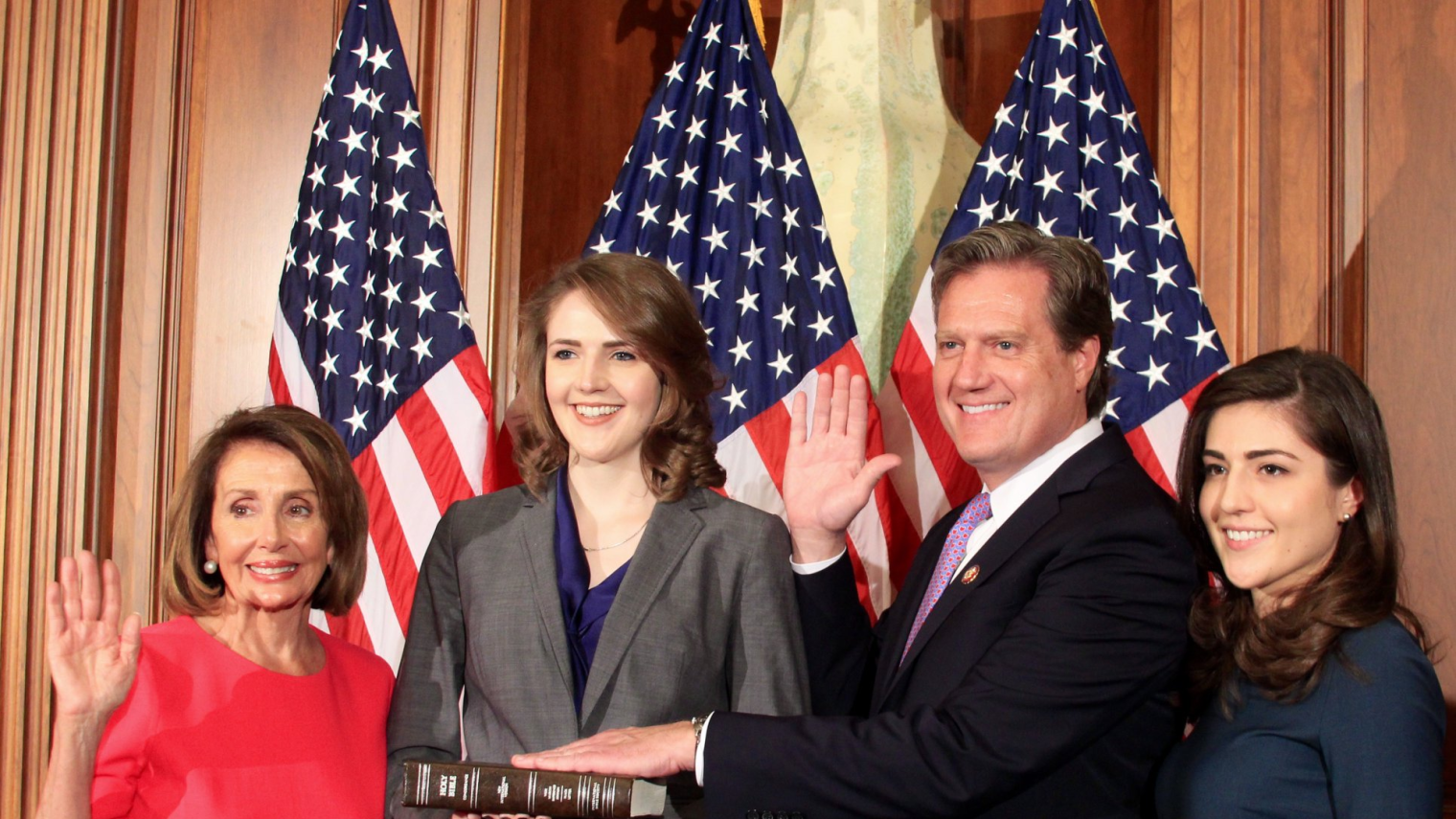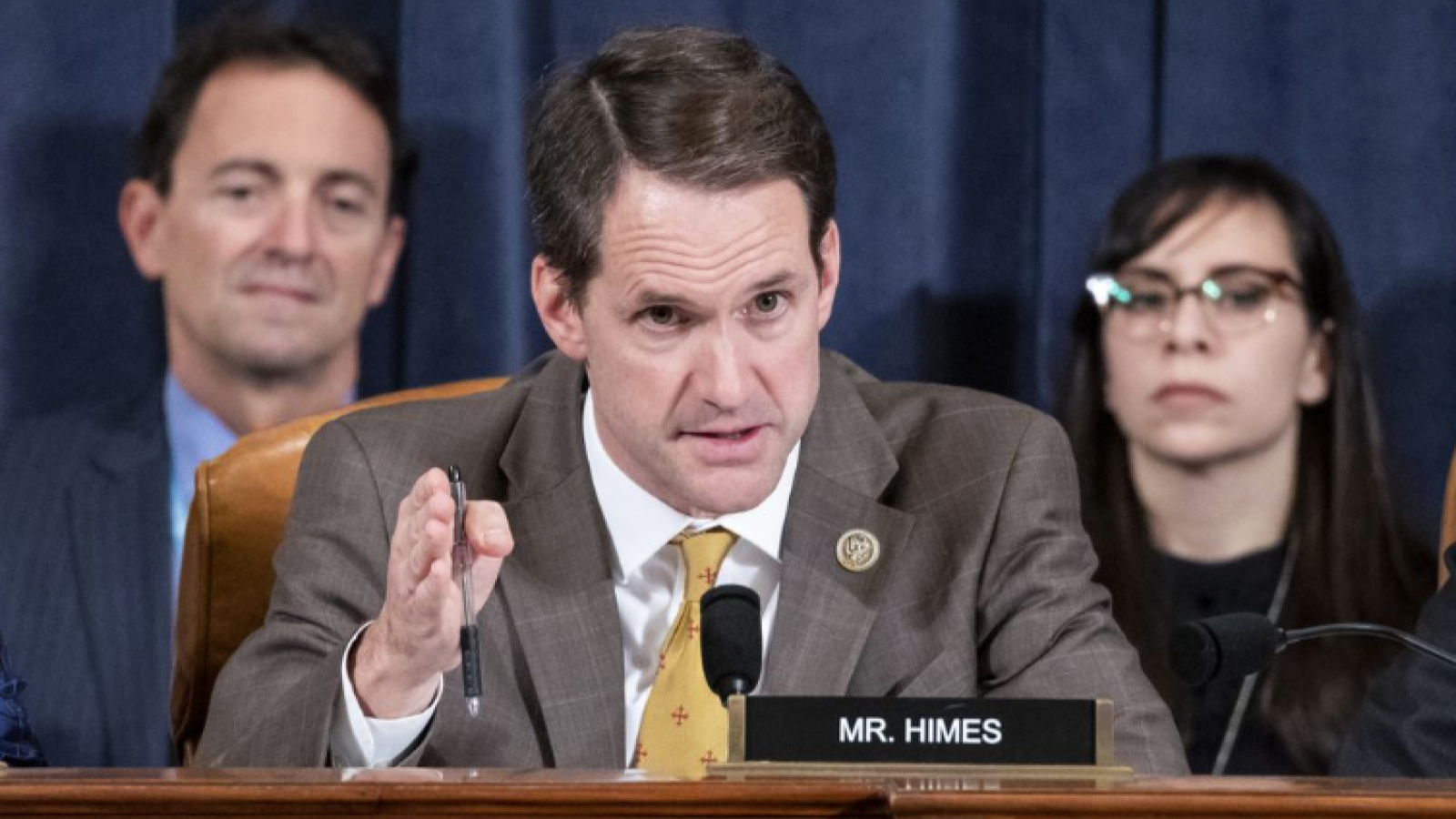Summary
This post on Middle East is 1 of 3 issues that US onAir curators are focusing on in the Global Affairs category.
American influence in the Middle East has reduced in recent years, most significantly since the Arab Spring, yet is still substantial.
Currently stated priorities of the U.S. government in the Middle East include resolving the Israeli–Palestinian conflict and limiting the spread of weapons of mass destruction among regional states, particularly Iran.
OnAir Post: Middle East
News
PBS NewsHour – April 17, 2024 (08:47)
For decades, Israel and Iran have fought one another in the shadows and through proxies. That all changed this past weekend with Iran’s direct attack on Israel. Israeli officials said they will retaliate but world leaders are urging restraint. Nick Schifrin has two views on the options for Israel and Iran and the risks with Eric Edelman and Vali Nasr.
About
Check the Global Affairs post for the party positions, committees, government agencies related to Middle East issues.
Overview
Security and Stability:
- Counterterrorism and violent extremism
- Regional conflicts (e.g., Yemen, Syria, Iraq)
- Arms proliferation and weapons of mass destruction
- Cyber threats and cyber warfare
Political and Economic Instability:
- Fragile states and authoritarian regimes
- Weak governance, corruption, and human rights abuses
- Economic inequality, unemployment, and poverty
- Political polarization and sectarian tensions
Religious and Cultural Divide:
- Sunni-Shia rivalry and sectarian violence
- Western and Islamic world perceptions and stereotypes
- Cultural differences and intercultural misunderstandings
Energy Security:
- Dependence on imported oil and geopolitical competition for resources
- Energy market volatility and energy security risks
- Climate change and environmental challenges
Global Power Dynamics:
- Rising powers (e.g., China, Russia) and their influence in the region
- US-China rivalry and its implications for the Middle East
- Role of Iran and its nuclear program
- Balance of power and power projection
Other Challenges:
- Mass migration and refugee flows
- Humanitarian crises and human suffering
- Democratic transitions and authoritarianism
- Water scarcity and environmental degradation
- Education and youth unemployment
Source: Google Search + Gemini + onAir curation
Solutions
Political Challenges:
- Promote inclusive governance: Support efforts to establish participatory political systems that represent diverse perspectives and foster dialogue.
- Resolve conflicts diplomatically: Facilitate negotiations and peace processes to address ongoing regional disputes, such as the Israeli-Palestinian conflict.
- Foster trust between governments and citizens: Encourage transparency, accountability, and responsiveness from governments to build public trust and legitimacy.
Economic Challenges:
- Promote economic diversification: Help Middle Eastern countries reduce dependence on oil revenues by developing other sectors, such as tourism, technology, and renewable energy.
- Support entrepreneurship and innovation: Create environments that foster startups and encourage businesses to invest in research and development.
- Enhance regional connectivity: Facilitate trade and investment flows within the Middle East and beyond by reducing barriers and promoting infrastructure development.
Security Challenges:
- Counter terrorism: Work with regional partners to disrupt terrorist networks, address underlying grievances, and promote de-radicalization efforts.
- Prevent the proliferation of weapons of mass destruction: Engage with Iran and North Korea to ensure compliance with nuclear agreements and prevent the acquisition of dangerous weapons.
- Promote regional stability: Maintain a military presence in the Middle East to deter aggression and ensure freedom of navigation in strategic waterways.
Humanitarian Challenges:
- Address the refugee crisis: Provide humanitarian assistance to refugees and displaced persons, support host countries, and explore durable solutions, such as resettlement and repatriation.
- Promote human rights: Advocate for the protection of human rights and support civil society organizations that promote transparency and accountability.
- Improve access to education and healthcare: Invest in education programs and healthcare initiatives to empower local populations and address the root causes of conflict.
Strategic Challenges:
- Rebalance relations with regional powers: Engage with Iran, Saudi Arabia, and Turkey as critical actors in the region, while maintaining a balance of power.
- Counter Russian and Chinese influence: Address challenges posed by Russia and China’s growing presence in the Middle East and preserve American interests.
- Promote a vision of stability and prosperity: Articulate a clear vision for the future of the Middle East based on inclusive governance, economic development, and regional cooperation.
Source: Google Search + Gemini + onAir curation
Websites
Government and Policy
- US Department of State, Bureau of Near Eastern Affairs: https://www.state.gov/bureaus-offices/under-secretary-for-political-affairs/bureau-of-near-eastern-affairs/
- US Institute of Peace, Middle East Desk: https://www.usip.org/topics/middle-east
- Middle East Institute: https://www.mei.edu/
Think Tanks and Research Institutions
- RAND Corporation, Middle East Program: https://www.rand.org/topics/middle-east.html
- Carnegie Endowment for International Peace, Middle East Program: https://carnegieendowment.org/programs/middle-east-program
- Brookings Institution, Middle East Initiative: https://www.brookings.edu/research/topic-clusters/middle-east-initiative/
News and Analysis
- Al Jazeera English: https://www.aljazeera.com/
- BBC News, Middle East: https://www.bbc.com/news/world-middle-east
- The New York Times, Middle East: https://www.nytimes.com/section/world/middleeast
International Organizations
- United Nations, Department of Political and Peacebuilding Affairs (DPPA): https://ppa.un.org/en/regions/middle-east
- World Bank, Middle East and North Africa Region: https://www.worldbank.org/en/region/mena
- International Monetary Fund, Middle East and Central Asia Department: https://www.imf.org/en/Departments/Middle-East-and-Central-Asia-Department
Non-Governmental Organizations
- Amnesty International, Middle East and North Africa: https://www.amnesty.org/en/countries/middle-east-and-north-africa/
- Human Rights Watch, Middle East and North Africa: https://www.hrw.org/middle-east/north-africa
- International Crisis Group, Middle East and North Africa: https://www.crisisgroup.org/region/middle-east-and-north-africa
Source: Google Search + Gemini + onAir curation
Legislation
Laws
Source: Google Search + Gemini + onAir curation
War Powers Resolution (1973)
- Requires the President to obtain Congressional approval for extended military actions beyond 60 days.
- Aim: To prevent the US from engaging in unauthorized or prolonged military conflicts.
2. Arms Export Control Act (1976)
- Regulates the sale of US defense articles and services to foreign countries.
- Requires Presidential approval for major arms sales and notification to Congress.
- Aim: To control the spread of conventional weapons and promote regional stability.
3. Foreign Assistance Act (1961)
- Authorizes US foreign aid programs, including economic and military assistance.
- Provides funding for humanitarian aid, infrastructure development, and security initiatives.
- Aim: To promote stability, economic growth, and democracy in developing countries.
4. Iran Nuclear Agreement Review Act (2015)
- Gives Congress the ability to review and block any nuclear agreement with Iran.
- Requires the President to certify that Iran is complying with the agreement and not engaging in destabilizing activities.
- Aim: To ensure Congressional oversight of US nuclear diplomacy with Iran.
5. National Defense Authorization Act (NDAA)
- Annual legislation that authorizes funding for the Department of Defense and military construction.
- Includes provisions related to US military operations in the Middle East and counterterrorism efforts.
- Aim: To provide funding and policy direction for US national defense.
6. Countering America’s Adversaries Through Sanctions Act (CAATSA, 2017)
- Imposes sanctions on entities engaged in significant transactions with Iran, North Korea, and Russia.
- Aim: To deter countries from undermining US national security interests in the Middle East.
7. The Anti-Terrorism and Effective Death Penalty Act (1996)
- Provides tools for investigating and punishing terrorist activities.
- Establishes special courts for terrorism cases and expands the use of the death penalty for certain terrorist offenses.
- Aim: To enhance law enforcement and judicial capabilities in combating terrorism.
8. Authorization for the Use of Military Force (2001)
- Authorized the President to use military force against those responsible for the September 11 attacks.
- Has been used to justify military operations against terrorist groups in the Middle East, including ISIS.
- Aim: To prevent future terrorist attacks by authorizing the use of force.
Bills Introduced 2023-2024
Source: Google Search + Gemini + onAir curation
Sampling of Bills:
H.R.3792 — U.S.-Israel Partnership and Abraham Accords Enhancement Act of 2023
Sponsor: Wilson, Joe [Rep.-R-SC-2] (Introduced 06/01/2023)
Cosponsors: (161)
Committees: House – Foreign Affairs; Science, Space, and Technology
Latest Action: House – 06/01/2023 Referred to the Committee on Foreign Affairs, and in addition to the Committee on Science, Space, and Technology, for a period to be subsequently determined by the Speaker, in each case for consideration of such provisions as fall within the jurisdiction of the… (All Actions)
S.3235 — End Iranian Terrorism Act of 2023
Sponsor: Risch, James E. [Sen.-R-ID] (Introduced 11/07/2023)
Cosponsors: (15)
Committees: Senate – Foreign Relations
Latest Action: Senate – 11/07/2023 Read twice and referred to the Committee on Foreign Relations. (All Actions)
S.3461 — Iran China Accountability Act of 2023
Sponsor: Blackburn, Marsha [Sen.-R-TN] (Introduced 12/11/2023)
Cosponsors: (7)
Committees: Senate – Foreign Relations
Latest Action: Senate – 12/11/2023 Read twice and referred to the Committee on Foreign Relations. (All Actions)
Authorization for Use of Military Force (AUMF) Repeal Act
- Repeals the 2001 AUMF that authorized the use of force against those responsible for the 9/11 attacks, providing Congress with greater oversight of military action in the Middle East.
2. Middle East Stability Act
- Authorizes funding for programs that promote stability and security in the Middle East, including support for economic development, security assistance, and diplomatic initiatives.
3. Iranian Nuclear Agreement Implementation Act
- Ensures US compliance with the Joint Comprehensive Plan of Action (JCPOA) nuclear agreement with Iran, including verification and monitoring of Iran’s nuclear activities.
4. Saudi Arabia Accountability and Transparency Act
- Imposes sanctions on Saudi Arabia for human rights violations and its role in the Yemen conflict, including restrictions on arms sales and freezing assets.
5. Yemen War Powers Resolution
- Ends US military support for Saudi Arabia’s intervention in the Yemen conflict, requiring the withdrawal of American forces and a cessation of arms deliveries.
6. Syria Accountability and Justice Act
- Authorizes sanctions on individuals and entities responsible for war crimes and human rights abuses in Syria, including the Syrian government and its allies.
7. Lebanon Economic and Environmental Stability Act
- Provides economic aid and technical assistance to Lebanon to address its economic and environmental challenges, including reforms to reduce corruption and improve governance.
8. Israeli-Palestinian Peace Act
- Calls for a two-state solution to the Israeli-Palestinian conflict, including negotiations based on UN resolutions and international law.
9. Iraq War Veterans Resolution
- Provides healthcare, education, and other benefits to veterans of the Iraq War, acknowledging the sacrifices made by US service members.
10. Afghanistan Withdrawal Accountability Act
- Investigates the US withdrawal from Afghanistan and evaluates the Biden administration’s handling of the evacuation and its aftermath.
Committees, Agencies, & Programs
Committees
Source: Google Search + Gemini + onAir curation
Senate Committees:
- Senate Foreign Relations Committee: Oversight of U.S. foreign policy, including relations with Middle Eastern countries.
- Senate Armed Services Committee: Jurisdiction over military affairs, including U.S. military operations in the Middle East.
- Senate Banking, Housing, and Urban Affairs Committee: Oversees international financial institutions and sanctions related to Middle Eastern countries.
- Senate Homeland Security and Governmental Affairs Committee: Responsible for counterterrorism efforts and border security, which are relevant to Middle Eastern security challenges.
House of Representatives Committees:
- House Foreign Affairs Committee: Similar to the Senate Foreign Relations Committee, but with a focus on the House of Representatives.
- House Armed Services Committee: Counterpart to the Senate Armed Services Committee, with jurisdiction over military issues related to the Middle East.
- House Financial Services Committee: Similar to the Senate Banking Committee, but with a focus on the House of Representatives.
- House Intelligence Committee: Oversight of U.S. intelligence agencies and their activities related to the Middle East.
- House Homeland Security Committee: Counterpart to the Senate Homeland Security Committee, with jurisdiction over counterterrorism and border security in relation to the Middle East.
Joint Committees:
- Joint Committee on Security and Foreign Affairs: Created to coordinate foreign policy and security issues between the Senate and House of Representatives. This committee may address Middle Eastern challenges as part of its broader mandate.
Other Relevant Committees:
- Senate Select Committee on Intelligence: Oversight of intelligence activities related to Middle Eastern security.
- House Permanent Select Committee on Intelligence: Similar to the Senate Select Committee on Intelligence, but with a focus on the House of Representatives.
- House Committee on Oversight and Reform: Can investigate and oversee U.S. government activities related to the Middle East, such as foreign aid or counterterrorism efforts.
Government Agencies
Source: Google Search + Gemini + onAir curation
Department of State:
- Responsible for diplomacy and foreign relations
- Manages US diplomatic missions in Middle Eastern countries
- Leads efforts to resolve conflicts and promote peace and stability
Department of Defense:
- Provides military support to US interests in the Middle East
- Operates bases and conducts operations against terrorist groups
- Conducts military exercises and arms sales to regional allies
CIA (Central Intelligence Agency):
- Gathers and analyzes intelligence on Middle Eastern countries
- Targets and disrupts terrorist networks
- Supports US foreign policy decision-making
FBI (Federal Bureau of Investigation):
- Investigates and prevents terrorism threats within the United States
- Works with foreign governments to combat terrorism and crime
- Partners with Middle Eastern law enforcement agencies
Treasury Department:
- Imposes sanctions against individuals and organizations linked to terrorism
- Tracks and intercepts illicit financial transactions
- Supports economic development and stability in the Middle East
National Security Council (NSC):
- Coordinates US national security policy, including towards the Middle East
- Advises the President on security matters
- Oversees interagency cooperation on Middle East issues
Department of Energy:
- Supports nuclear non-proliferation efforts in the Middle East
- Provides assistance in developing sustainable energy sources
- Promotes scientific cooperation and research
US Agency for International Development (USAID):
- Provides humanitarian and development assistance to Middle Eastern countries
- Supports programs in education, health, economic growth, and democracy
- Works with local governments and NGOs to address regional challenges
Environmental Protection Agency (EPA):
- Cooperates with Middle Eastern countries on environmental issues
- Provides technical assistance and support on pollution control, water resources, and climate change
- Promotes the protection of natural resources in the region
Department of Homeland Security:
- Protects the United States from terrorist attacks and other threats
- Enforces border security and immigration laws
- Works with Middle Eastern governments to prevent and detect terrorism
Bureau of Near Eastern Affair
Source: Government Website
Our Mission
The Bureau of Near Eastern Affairs leads U.S. foreign policy in the Middle East and North Africa region through carefully administered diplomacy, advocacy, and assistance that advances the interests, safety, and economic prosperity of the American people. In cooperation with regional partners, we promote democratic values and foster a free, peaceful, and prosperous Middle East and North Africa. The Bureau uses diplomatic tools and public engagement to end conflict, highlight the value of education, and enhance respect for democratic institutions, including freedom of the press, human rights, religious liberty, and the rule of law. The United States will continue to work closely with its allies and partners in the region to further these mutual interests and counter extremist ideologies that seek to destabilize the region.
Programs & Initiatives
Source: Google Search + Gemini + onAir curation
More Information
Nonpartisan Organizations
Source: Google Search + Gemini + onAir curation
Think Tanks
- Brookings Institution: Conducts research and analysis on a wide range of foreign policy issues, including the Middle East.
- Carnegie Endowment for International Peace: Studies and engages in dialogue on international affairs, with a focus on the Middle East.
- Council on Foreign Relations: Nonpartisan think tank that provides in-depth analysis and policy recommendations on global issues, including the Middle East.
- International Crisis Group: Independent organization that monitors and analyzes conflict situations around the world, including in the Middle East.
- Rand Corporation: Nonprofit research and analysis organization that provides objective information to help decision-makers understand policy options.
Policy Research Centers
- Center for American Progress: Progressive think tank that conducts research and advocates for policies that promote economic opportunity and social justice in the United States, including in the Middle East.
- Heritage Foundation: Conservative think tank that promotes free markets, limited government, and a strong defense, including in the Middle East.
- Hudson Institute: Nonpartisan think tank that focuses on national security, foreign policy, and economic issues, with a significant focus on the Middle East.
- United States Institute of Peace: Independent, nonpartisan institution that works to prevent, mitigate, and resolve violent conflict around the world, including in the Middle East.
- Wilson Center: Nonpartisan institution that supports scholarly research and public debate on global issues, including the Middle East.
Research Institutes
- Brookings Doha Center: Located in Qatar, this research center focuses on regional issues related to the Middle East.
- Harvard Kennedy School Belfer Center for Science and International Affairs: Conducts research and analysis on security and international relations, including the Middle East.
- Johns Hopkins University School of Advanced International Studies: Leading institution for graduate education and research in international affairs, with a strong focus on the Middle East.
- Massachusetts Institute of Technology Center for International Studies: Interdisciplinary center that conducts research and provides policy recommendations on global issues, including the Middle East.
- Princeton University Near Eastern Studies Program: Research and teaching program that examines the history, culture, and politics of the Middle East.
Partisan Organizations
Source: Google Search + Gemini + onAir curation
Democratic Organizations
- Center for American Progress: A progressive think tank that promotes diplomacy and multilateralism in the Middle East.
- Council on Foreign Relations: A centrist think tank that provides analysis and recommendations on US foreign policy, including in the Middle East.
- Democratic Socialists of America: A socialist organization that advocates for a foreign policy based on international cooperation and anti-imperialism.
Republican Organizations
- American Enterprise Institute: A conservative think tank that promotes a strong military and a muscular foreign policy in the Middle East.
- Center for Security Policy: A hawkish think tank that advocates for aggressive military action against perceived threats in the Middle East.
- Hudson Institute: A conservative think tank that focuses on national security and geopolitical issues in the Middle East.
“United States foreign policy in the Middle East” (Wiki)
Contents
(Top)
1History
2Israel
3Syrian coup d’état (1949)
4Mosaddeq and the Shah of Iran (1953)
5Suez Crisis (1956)
6Six-Day War (1967) and Black September (1970)
7Iran–Iraq War (1980–1988)
8Kuwait and the Gulf War (1991)
9Saudi Arabia
10Afghanistan
11Iraqi conflict
12Libya (2011–present)
13Yemen
14Syria (2011–present)
15Turkey
16Bilateral relations in the Greater Middle East
17Criticism
18See also
19Notes
20References
21Further reading
22External links

United States foreign policy in the Middle East has its roots in the early 19th-century Tripolitan War that occurred shortly after the 1776 establishment of the United States as an independent sovereign state, but became much more expansive in the aftermath of World War II. With the goal of preventing the Soviet Union from gaining influence in the region during the Cold War, American foreign policy saw the deliverance of extensive support in various forms to anti-communist and anti-Soviet regimes; among the top priorities for the U.S. with regards to this goal was its support for the State of Israel against its Soviet-backed neighbouring Arab countries during the peak of the Arab–Israeli conflict. The U.S. also came to replace the United Kingdom as the main security patron for Saudi Arabia as well as the other Arab states of the Persian Gulf in the 1960s and 1970s in order to ensure, among other goals, a stable flow of oil from the Persian Gulf.[1] As of 2023, the U.S. has diplomatic relations with every country in the Middle East except for Iran, with whom relations were severed after the 1979 Islamic Revolution, and Syria, with whom relations were suspended in 2012 following the outbreak of the Syrian Civil War.
American influence in the Greater Middle East has reduced in recent years, most significantly since the Arab Spring,[2] yet is still substantial.[3] Currently stated priorities of the U.S. government in the Middle East include resolving the Israeli–Palestinian conflict and limiting the spread of weapons of mass destruction[4] among regional states, particularly Iran.
History

The United States’ relationship with the Middle East prior to World War I was limited, although commercial ties existed even in the early 19th century. The U.S. engaged in a military conflict with Ottoman Tripolitania from 1801 to 1805 during the Tripolitan War regarding tributary payment which president Thomas Jefferson refused to pay. President Andrew Jackson established formal ties with the Sultan of Muscat and Oman in 1833. (The Sultan saw the U.S. as a potential balance to Britain’s overwhelming regional influence.) Commercial relations opened between the U.S. and Persia in 1857, after Britain persuaded the Persian government not to ratify a similar agreement in 1851.[5]
Britain and France took control of most of the former Ottoman Empire after defeating it in World War I. They held mandates from the League of Nations. The United States refused to take any mandates in the region and was “popular and respected throughout the Middle East”.[6] Indeed, “Americans were seen as good people, untainted by the selfishness and duplicity associated with the Europeans.”[7] American Christian missionaries brought modern medicine and set up educational institutions all over the Middle East as an adjunct to their religious proselytizing. Moreover, the United States had provided the Middle East with highly skilled petroleum engineers.[8] Thus, there were some connections made between the United States and the Middle East before the Second World War. Other examples of cooperation between the U.S. and the Middle East are the Red Line Agreement signed in 1928 and the Anglo-American Petroleum Agreement signed in 1944. Both of these agreements were legally binding and reflected an American interest in control of Middle Eastern energy resources, mainly oil, and moreover reflected an American “security imperative to prevent the (re)emergence of a powerful regional rival”.[9] The Red Line Agreement had been “part of a network of agreements made in the 1920s to restrict the supply of petroleum and ensure that the major [mostly American] companies … could control oil prices on world markets”.[10] The Red Line agreement governed the development of Middle East oil for the next two decades. The Anglo-American Petroleum Agreement of 1944 was based on negotiations between the United States and Britain over the control of Middle Eastern oil. Below is shown what the American President Franklin D. Roosevelt had in mind for a British Ambassador in 1944:
Persian oil … is yours. We share the oil of Iraq and Kuwait. As for Saudi Arabian oil, it’s ours.[11]

On August 8, 1944, the Anglo-American Petroleum Agreement was signed, dividing Middle Eastern oil between the United States and Britain. Consequently, political scholar Fred H. Lawson remarks, that by mid-1944, U.S. officials had buttressed their country’s position on the peninsula by concluding an Anglo-American Petroleum Agreement that protected “all valid concession contracts and lawfully acquired rights” belonging to the signatories and established a principle of “equal opportunity” in those areas where no concession had yet been assigned.[12] Furthermore, political scholar Irvine Anderson summarizes American interests in the Middle East in the late 19th century and the early 20th century noting that, “the most significant event of the period was the transition of the United States from the position of net exporter to one of net importer of petroleum.”[13]
By the end of the Second World War, Washington had come to consider the Middle East region as “the most strategically important area of the world.”[14] and “one of the greatest material prizes in world history,” argues Noam Chomsky.[14] For that reason, it was not until around the period of World War II that America became directly involved in the Middle East region. At this time the region was going through great social, economic, and political changes and as a result, internally the Middle East was in turmoil. Politically, the Middle East was experiencing an upsurge in the popularity of nationalistic politics and an increase in the number of nationalistic political groups across the region, which was causing great trouble for the English and French colonial powers.
Historian Jack Watson explains that “Europeans could not hold these lands indefinitely in the face of Arab nationalism“.[15] Watson then continues, stating that “by the end of 1946 Palestine was the last remaining mandate, but it posed a major problem”.[16] In truth, this nationalistic political trend clashed with American interests in the Middle East, which were, as Middle East scholar Louise Fawcett argues, “about the Soviet Union, access to oil and the project for a Jewish state in Palestine“.[17] Hence, Arabist Ambassador Raymond Hare described the Second World War, as “the great divide” in United States’ relationship with the Middle East, because these three interests would later serve as a backdrop and reasoning for a great deal of American interventions in the Middle East and thus also come to be the cause of several future conflicts between the United States & the Middle East.[7]
As of 2024, the United States has approximately 45,000 troops in the region, including approximately 2,500 troops stationed in Iraq, 900 troops stationed in Syria, and others stationed in Bahrain, Djibouti, Jordan, Kuwait, Qatar, and the United Arab Emirates. soldiers at the country’s base. About 15,000 of these troops were deployed to the region as part of a temporary surge after October 7 2023, with the United States retaining about 30,000 troops until then. The troops are a fraction of the number the U.S. deployed in 2010, when it had more than 100,000 troops in Iraq, about 70,000 in Afghanistan and many more in neighboring countries. After 2015, the U.S. military presence in Iraq declined sharply; and all U.S. troops were withdrawn from Afghanistan in 2021.[18]
Israel
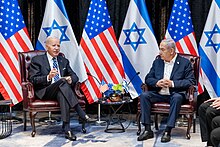
Israel is designated by the United States as a major non-NATO ally. Israel–United States relations are an essential factor in the United States foreign policy in the Middle East. Congress has placed significant importance on the maintenance of a close relationship with Israel. Analysts maintain that Israel is a strategic ally for the United States, and that relations with the former will strengthen the latter’s influence in the Middle East.[19] Former US senator Jesse Helms argued that the military foothold offered by Israel in the region alone justified the expense of American military aid. He referred to Israel as “America’s aircraft carrier in the Middle East”.[20][21]
Formation of Israel (1948)
In 1947, the U.S. and the Truman administration, under domestic political pressure, pushed for a solution and resolution on the Arab–Israeli conflict, and in May 1948 the new state of Israel came into existence. This process was not without its fights and loss of lives. Nevertheless, “the first state to extend diplomatic recognition to Israel was the United States; the Soviet Union and several Western nations quickly followed suit. No Arab state, however, recognized Israel.”[22] The United States denounced the Arab invasion of former Mandatory Palestine that took place shortly after the Israeli Declaration of Independence.[23]
Israel-Hamas War (2023)
Following the Hamas-led attack on Israel on October 7, 2023, and the subsequent Israel–Hamas war, the Biden administration requested ~$14 billion in aid from congress to provide military aid for Israel. Congress later approved a bill on February 13, 2024, the legislation included ~$19.3 billion; to support military operations ($14.1bn), air defense ($4bn), and the Iron Beam defense system ($1.2bn). The legislation also included $9.2 billion in humanitarian assistance for civilians in Gaza and the West Bank, along with those caught in warzones across the globe.[24]
As a result of the on-going support of Israel in the face of a humanitarian crisis in Gaza, the United States and President Joe Biden have faced scrutiny and backlash from NGOs, such as Human Rights Watch, Doctors Without Borders, and the Center for Constitutional Rights. It has been said by some academics, that the US is complicit in the alleged genocide of Palestinians committed by Israel. The CCR has filed a lawsuit against Biden for allegedly “failing in his duty under international and US laws to prevent Israel committing genocide in Gaza.”[25]
Syrian coup d’état (1949)
Syria became an independent republic in 1946, but the March 1949 Syrian coup d’état, led by Army Chief of Staff Husni al-Za’im, ended the initial period of civilian rule. Za’im met at least six times with CIA operatives in the months prior to the coup to discuss his plan to seize power. Za’im requested American funding or personnel, but it is not known whether this assistance was provided. Once in power, Za’im made several key decisions that benefitted the United States. He approved the Trans-Arabian Pipeline (TAPLINE), an American project designed to transport Saudi Arabian oil to Mediterranean ports. Construction of TAPLINE had been delayed due to Syrian intransigence. Za’im also improved relations with two American allies in the region: Israel and Turkey. He signed an armistice with Israel, formally ending the 1948 Arab–Israeli War and he renounced Syrian claims to Hatay Province, a major source of dispute between Syria and Turkey. Za’im also cracked down on local communists. However, Za’im’s regime was short-lived. He was overthrown in August, just four and a half months after seizing power.[26][27][28][29]
Mosaddeq and the Shah of Iran (1953)

Opposed to foreign intervention in Iran and a keen nationalist, Mohammed Mosaddeq became the prime minister of Iran in 1951. Thus, when Mosaddeq was elected he chose to nationalize the Iranian oil industry, where previously British holdings had generated great profits for Britain through the Anglo-Iranian Oil Company. Furthermore, prior to the nationalization of Iranian oil, Mosaddeq had also cut all diplomatic ties with Britain.[30] The Shah of Iran, Mohammad Reza Pahlavi was opposed to the nationalization of Iranian oil as he feared this would result in an oil embargo, which would destroy Iran’s economy and thus, the Shah was very concerned with the effect of Mosaddeq’s policies on Iran. Equally worried were workers in the Iranian oil industry, when they experienced the economic effect of the sanctions on Iranian oil exports which Mosaddeq’s policies had resulted in, and riots were happening across Iran.[31]
Thus, Mohammad Reza Pahlavi asked Mosaddeq to resign, as was the Shah’s constitutional right, but Mosaddeq refused, which resulted in national uprisings. The Shah, fearing for his personal security, fled the country but nominated General Fazlollah Zahedi as the new Prime Minister. Although General Fazlollah Zahedi was a nationalist, he did not agree with the Mosaddeq’s lenient attitude towards the communist Tudeh party, which the United States had also become increasingly concerned with, fearing Soviet influence spreading in the Middle East. Therefore, in late 1952, the British government asked the U.S. administration for help with the removal of Mohammed Mosaddeq. President Harry S. Truman thought Mossadeq was a valuable bulwark against Soviet influence.[32] However, Truman left office in January 1953, and the new administration of Dwight Eisenhower shared British concern over Mossadeq. Allen Dulles, the director of the CIA, approved one million dollars on April 4, 1953, to be used “in any way that would bring about the fall of Mossadegh”[33] Consequently, after a failed attempt on August 15, “on August 19, 1953, General Fazlollah Zahedi succeeded [with the help of the United States and Britain] and Mossadegh was overthrown. The CIA covertly funneled five million dollars to General Zahedi’s regime on August 21, 1953.”[33]
This CIA operation, often referred to as Operation Ajax and led by CIA officer Kermit Roosevelt Jr., ensured the return of the Shah on August 22, 1953.[31]
Suez Crisis (1956)
Although accepting large sums of military aid from the United States in 1954, by 1956 Egyptian leader Nasser had grown tired of the American influence in the country. The involvement that the U.S. would take in Egyptian business and politics in return for aid, Nasser thought “smacked of colonialism.”[34] Indeed, as political scholar B.M. Bleckman argued in 1978, “Nasser had ambivalent feelings toward the United States. From 1952 to 1954 he was on close terms with U.S. officials and was viewed in Washington as a promising moderate Arab leader. The conclusion of an arms deal with the USSR in 1955, however, had cooled the relationship between Cairo and Washington considerably, and the Dulles-Eisenhower decision to withdraw the offer to finance the Aswan High Dam in mid-1956 was a further blow to the chances of maintaining friendly ties. Eisenhower’s stand against the British, French and Israeli attack on Egypt in October 1956 created a momentary sense of gratitude on the part of Nasser, but the subsequent development of the Eisenhower Doctrine, so clearly aimed at ‘containing’ Nasserism, undermined what little goodwill existed toward the United States in Cairo.”[35] “The Suez Crisis of 1956 marked the demise of British power and its gradual replacement by the USA as the dominant power in the Middle East.”[36] The Eisenhower Doctrine became a manifestation of this process. “The general objective of the Eisenhower Doctrine, like that of the Truman Doctrine formulated ten years earlier, was the containment of Soviet expansion.”[37] Furthermore, when the Doctrine was finalized on March 9, 1957, it “essentially gave the president the latitude to intervene militarily in the Middle East … without having to resort to Congress.”[38] indeed as, Middle East scholar Irene L. Gerdzier explains “that with the Eisenhower Doctrine the United States emerged “as the uncontested Western power … in the Middle East.”[39]
Eisenhower Doctrine

In response to the power vacuum in the Middle East following the Suez Crisis, the Eisenhower administration developed a new policy designed to stabilize the region against Soviet threats or internal turmoil. Given the collapse of British prestige and the rise of Soviet interest in the region, the president informed Congress on January 5, 1957, that it was essential for the U.S. to accept new responsibilities for the security of the Middle East. Under the policy, known as the Eisenhower Doctrine, any Middle Eastern country could request American economic assistance or aid from U.S. military forces if it was being threatened by armed aggression. Though Eisenhower found it difficult to convince leading Arab states or Israel to endorse the doctrine, he applied the new doctrine by dispensing economic aid to shore up the Kingdom of Jordan, encouraging Syria‘s neighbors to consider military operations against it, and sending U.S. troops into Lebanon to prevent a radical revolution from sweeping over that country.[40] The troops sent to Lebanon never saw any fighting, but the deployment marked the only time during Eisenhower’s presidency when U.S. troops were sent abroad into a potential combat situation.[41]
Though U.S. aid helped Lebanon and Jordan avoid revolution, the Eisenhower doctrine enhanced Nasser’s prestige as the preeminent Arab nationalist. Partly as a result of the bungled U.S. intervention in Syria, Nasser established the short-lived United Arab Republic, a political union between Egypt and Syria.[42] The U.S. also lost a sympathetic Middle Eastern government due to the 1958 Iraqi coup d’état, which saw King Faisal I replaced by General Abd al-Karim Qasim as the leader of Iraq.[43]
Jordan
Meanwhile, in Jordan nationalistic anti-government rioting broke out and the United States decided to send a battalion of marines to nearby Lebanon prepared to intervene in Jordan later that year. Douglas Little argues that Washington’s decision to use the military resulted from a determination to support a beleaguered, conservative pro-Western regime in Lebanon, repel Nasser’s pan-Arabism, and limit Soviet influence in the oil-rich region. However Little concludes that the unnecessary American action brought negative long-term consequences, notably the undermining of Lebanon’s fragile, multi-ethnic political coalition and the alienation of Arab nationalism throughout the region.[44] To keep the pro-American King Hussein of Jordan in power, the CIA sent millions of dollars a year of subsidies. In the mid-1950s the U.S. supported allies in Lebanon, Iraq, Turkey, and Saudi Arabia and sent fleets to be near Syria.[45] However, 1958 was to become a difficult year in U.S. foreign policy; in 1958 Syria and Egypt were merged into the “United Arab Republic”, anti-American and anti-government revolts started occurring in Lebanon, causing the Lebanese president Chamoun to ask America for help, and the very pro-American King Feisal the 2nd of Iraq was overthrown by a group of nationalistic military officers.[46] It was quite “commonly believed that [Nasser] … stirred up the unrest in Lebanon and, perhaps, had helped to plan the Iraqi revolution.”[47]
Six-Day War (1967) and Black September (1970)
In June 1967 Israel fought with Egypt, Jordan, and Syria in the Six-Day War. As a result of the war, Israel captured the West Bank, Golan Heights, and the Sinai Peninsula. The U.S. supported Israel with weapons and continued to support Israel financially throughout the 1970s. On September 17, 1970, with U.S. and Israeli help, Jordanian troops attacked PLO guerrilla camps, while Jordan’s U.S.-supplied air force dropped napalm from above. The U.S. deployed the aircraft carrier Independence and six destroyers off the coast of Lebanon and readied troops in Turkey to support the assault.
The American interventions in the years before the Iranian revolution have all proven to be based in part on economic considerations, but more so have been influenced and led by the international Cold War context.[48]
Iran–Iraq War (1980–1988)
On 22 September 1980, Saddam Hussein’s Iraq attacked Ayatollah Khomeini ruled Iran, starting bombing 10 military airfields.[49]
Support for Iraq
Ted Koppel‘s ABC News broadcast of July 1992 points out the US cooperation with Iraq, by sending money, armaments, dual-use technology and if necessary, the provision of emergency action plans against Iran.[50] According to revealed CIA files, the United States supported Hussein’s Iraq even to the point of a US awareness of Iraqi use of chemical armaments. This violated the 1925 Geneva Protocol, which Iraq did not approve. Moreover, the US Defense Intelligence Agency provided Iraq with satellite positions of Iranian troops to help keep track of the enemies.[51] American position in the war played “a secretly but unambiguously” pro-Iraq support.[52]
A few scholars have argued the US gave a “green light” to Hussein’s attack on Iran.[53] Yet, considering now available US and Iraqi papers, the “green light” hypothesis is “more a myth than reality”. US did not provide an initial encouragement to let the war begin as well as Hussein’s attack was independent of the US.[54]
Support for Iran
US-Iran relations drastically changed since the Iranian 1979 revolution. It marked the fall of the Shah and its closeness with the Western world and the takeover of Khomeini with a return to Islamic law. In 1979 the US Embassy in Teheran was caught by protesters, and American civilians were taken hostages.[55] In 1980, the US changed policy to allow Israel to sell American armament to Iran during the war. The deal between US and Israel was coordinated by the State Department Counselor, McFarlane, with US Secretary of State Alexander Haig Jr. and Israeli Prime Minister Menachem Begin agreeing to a 6 to 18 months period weapons’ provision.[56] This support to Iran was first explained as a way to have back the American hostages. Yet, the hostages were delivered before the US supply of weapons to Iran.[57] In addition, this armament provision lasts for more than the established period.[56] Indeed, this was later known as the Iran-Contra Affair publicly divulgated in November 1985. US supplied weapons to Iran through Israel, and the profit gained went to finance the Contra rebels, opponents to the Nicaragua Sandinista Front.[58]
Kuwait and the Gulf War (1991)
The Gulf War in 1991 opposed a coalition of 35 countries led by the United States against Iraq after it invades Kuwait. Iraq had been an ally of the Soviet Union during the Cold War, resulting in little relation with the US. After Iraq threatened to invade Kuwait, the US said they would also protect their allies in the region against Iraq’s invasion.[59] After the invasion in 1990, economic sanctions are implemented when the US request a meeting of the United Nations Security Council and adopt Resolution 660.[60] The US rejected the proposal of the Iraqi army to leave Kuwait if a solution for Palestine is found.[61] Military means are employed by the US in 1991, as Resolution 678 allows.[62] Also, the coalition is created, with 73% of the armed force being American. The United States armed forces lead many attacks on the Iraqi army in several battles, through air strikes and land battles.[63]
Saudi Arabia

Saudi Arabia and the United States are strategic allies,[64][65][66] but relations with the U.S. became strained following September 11 attacks.[67]
Foreign policies of the US in Saudi Arabia started with the Quincy Agreement in 1945, in which the US agreed to provide Saudi Arabia with military security in exchange for secure access to supplies of oil. Military aid was provided to Saudi Arabia during the Gulf War, and almost 500,000 soldiers were sent to protect Saudi Arabia from Iraq.[68]
In March 2015, President Barack Obama declared that he had authorized U.S. forces to provide logistical and intelligence support to the Saudis in their military intervention in Yemen, establishing a “Joint Planning Cell” with Saudi Arabia.[69] The report by Human Rights Watch stated that US-made bombs were being used in attacks indiscriminately targeting civilians and violating the laws of war.[70]
US- Saudi Arabia Arm deal
Both countries have an interest in fighting terrorism and are allies. In 2017, an agreement aiming to provide Saudi Arabia with $115 billion of weapons containing tanks, combat ships and missile defence systems was announced by President Donald Trump. In 2018, the Saudi Government had purchased over $14.5 billion of weapons to the US. Also in 2018, the Saudi-led coalition fighting terrorism in Yemen bombed a school bus killing 40 children, with a bomb provided by the United States. Many criticized the United States’ support for Saudi intervention in Yemen which contributed to the killing of 10,000 children.[71] In December 2018, the end of American assistance to Saudi Arabia’s war in Yemen in voted by senators.[72]
The lack of support from the US for the Saudi-led coalition interventions in Yemen stained the relationship of the two countries, causing Saudi Arabia to refuse the US’s request of increasing oil production.[73]
Afghanistan
Iraqi conflict
Libya (2011–present)
Yemen
20th century
The US established diplomatic relations with Yemen in 1947 when it became a member of the United Nations. The Yemen Arab Republic is created in 1962 and recognized by the US the same year. In 1967, the US recognize the People’s Democratic Republic of Yemen. The 20th century’s Us policies in Yemen support the unification and are largely concentrated on humanitarian aid and some military operations. In the 1990s, the US develop a $42 million program in Yemen subsidizing agriculture, education and health.[74] In return, the Yemeni government cooperates with US oil companies.[75] US-Yemen relationship deteriorates when both take different sides during the Kuwait crisis[75]
21st century

Al-Qaeda‘s terrorist attacks in the United States have transformed US’s policies in Yemen. The US has engaged in many military actions against the terrorist group but also humanitarian help and cooperation with other actors. Also, the Yemeni government improved its cooperation in dismantling the terrorist group with the US government after this event.
Over the last decades, the US has responded to Yemen’s humanitarian crisis caused by the war. The reported funding in the country from the US has increased this past decade from $115m in 2012 to almost a billion in 2019. It funds sectors like the supply of food security, health, education and protection.[76] But the blockade of access to the country by the Saudi-led coalition, which has received support from the United States, prevents humanitarian aid to be fully applied.[77]
Military policies in Yemen have increased since the replacement of the previous president Ali Abdullah Saleh by Abdrabbuh Mansur Hadi, far more cooperative in fighting terrorism in Yemen. Military policies are characterized by the training of the military by the US forces, the supply of weapons but also air strikes. The US also concluded an agreement with Saudi Arabia in 2015 which engages the US in supplying weapons to Saudi Arabia for counterterrorist actions in Yemen.
Syria (2011–present)
2011 saw several anti-governmental protests arising in many Arab countries, known as the Arab Spring. Syria opposed the Assad government through demonstrations which were put down fomenting a civil war.[78]
US involvement in the Syrian civil war started under the Obama presidency, with the involvement of US troops in 2015.[79] US troops’ involvement continued under the Trump presidency, although Trump stated on several occasions that he did not want “boots on the ground” in Syria for much longer, asking the army to retire altogether, which never happened. US continued to lead an alliance of up to 74 countries to fight against ISIS terrorist organization, but also with peacekeeping and patrolling of oilfields missions. The situation became more complicated in 2019, after Turkey struck an agreement with Russia, whose army also got directly involved. The US and the Western coalition got involved in multiple fights, mostly on the side of the Kurdish led YPG and SDF liberation army, causing therefore tensions with Turkey, which fundamentally never stopped fighting Kurds in Syria.[80] Trump’s presidency has not made things any easier for US troops deployed in Syria, moving from showing little interest[81] to showing interest in the oilfields located in the North-Eastern province of Syria, to finally showing signs of appropriating a victory that did not really happen.[82] But the situation remains far from clear for the US army in Syria[83] with its presence continuing under the Biden presidency, with focus on military operations and airstrikes shifting towards the East, to better fight Iran supported militias.[84]
Turkey

Coup attempt (2016)
On 15 July 2016, a coup d’état was attempted in Turkey by a faction within the Turkish Armed Forces against state institutions, including, but not limited to the government and President Recep Tayyip Erdoğan.
The Turkish government accused the coup leaders of being linked to the Gülen movement, which is designated as a terrorist organization by the Republic of Turkey and led by Fethullah Gülen, a Turkish businessman and cleric who lives in Pennsylvania, United States. Erdoğan accuses Gülen of being behind the coup—a claim that Gülen denies—and accused the United States of harboring him. President Recep Tayyip Erdoğan accused the head of United States Central Command, chief General Joseph Votel[85] of “siding with coup plotters,” (after Votel accused the Turkish government of arresting the Pentagon’s contacts in Turkey).[86]
Bilateral relations in the Greater Middle East
American allies
States
 Israel (see Israel–United States relations) (Major non-NATO ally)
Israel (see Israel–United States relations) (Major non-NATO ally)

Dedication ceremony of the Embassy of the United States in Jerusalem, Israel, 14 May 2018  Saudi Arabia (see Saudi Arabia–United States relations)
Saudi Arabia (see Saudi Arabia–United States relations) Turkey (see Turkey–United States relations) (NATO member state)
Turkey (see Turkey–United States relations) (NATO member state) Qatar (see Qatar–United States relations) (Major non-NATO ally)
Qatar (see Qatar–United States relations) (Major non-NATO ally) Bahrain (see Bahrain–United States relations) (Major non-NATO ally)
Bahrain (see Bahrain–United States relations) (Major non-NATO ally) Kuwait (see Kuwait–United States relations) (Major non-NATO ally)
Kuwait (see Kuwait–United States relations) (Major non-NATO ally) United Arab Emirates (see United Arab Emirates–United States relations)
United Arab Emirates (see United Arab Emirates–United States relations) Jordan (see Jordan–United States relations) (Major non-NATO ally)
Jordan (see Jordan–United States relations) (Major non-NATO ally) Egypt (see Egypt–United States relations) (Major non-NATO ally)
Egypt (see Egypt–United States relations) (Major non-NATO ally) Cyprus (see Cyprus–United States relations)[87]
Cyprus (see Cyprus–United States relations)[87]
Autonomous region
 Iraqi Kurdistan (see Iraqi Kurdistan–United States relations)
Iraqi Kurdistan (see Iraqi Kurdistan–United States relations)
Factions and organizations
Ex-allies
 Imperial State of Iran (see Iranian Islamic Revolution, 1953 Iranian coup d’état)
Imperial State of Iran (see Iranian Islamic Revolution, 1953 Iranian coup d’état) Free Syrian Army (see Timber Sycamore, American-led intervention in the Syrian Civil War)[a][88]
Free Syrian Army (see Timber Sycamore, American-led intervention in the Syrian Civil War)[a][88] Islamic Republic of Afghanistan (see 2021 Taliban offensive)
Islamic Republic of Afghanistan (see 2021 Taliban offensive)
Hostile relations with America
States
 Iran (see Iran–United States relations after 1979, United States sanctions against Iran)
Iran (see Iran–United States relations after 1979, United States sanctions against Iran) Syria (see Syria–United States relations)
Syria (see Syria–United States relations) Turkey (see Turkey–United States relations)[b][89][90]
Turkey (see Turkey–United States relations)[b][89][90] Iraq (see Iraq–United States relations)[c][91]
Iraq (see Iraq–United States relations)[c][91] Afghanistan (see Afghanistan–United States relations, International relations with the Taliban)[d][92]
Afghanistan (see Afghanistan–United States relations, International relations with the Taliban)[d][92]
Organizations
 Al-Qaeda
Al-Qaeda Islamic Revolutionary Guard Corps
Islamic Revolutionary Guard CorpsHezbollah[93]
 Popular Mobilization Forces
Popular Mobilization Forces Houthi movement
Houthi movement Hamas
Hamas Palestinian Islamic Jihad
Palestinian Islamic Jihad Islamic State
Islamic State Popular Front for the Liberation of Palestine
Popular Front for the Liberation of Palestine Popular Front for the Liberation of Palestine – General Command
Popular Front for the Liberation of Palestine – General Command- Popular Resistance Committees
Kata’ib Hezbollah
- Asa’ib Ahl al-Haq
Criticism
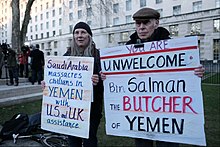
The U.S. has been accused by some U.N. officials of condoning actions by Israel against Palestinians.[94]
See also
- 2023 American–Middle East conflict
- British foreign policy in the Middle East
- Arab lobby in the United States
- Dual containment
- Foreign relations of the Arab League
- Gulf War
- United States–Middle East economic relations
- Middle Eastern foreign policy of the Barack Obama administration
- Mission Accomplished
- Foreign interventions by the United States
Books
Notes
- ^ The Trump administration ends CIA arms support for anti-Assad Syria rebels in 2017
- ^ Relations between the two have deteriorated since about 2016 following the aftermath of the 2016 Turkish coup attempt
- ^ Although the two countries still maintain a certain degree of cooperation, relations have worsened ever since the end of the War in Iraq
- ^ Most countries, including the United States, have not recognition of the Islamic Emirate of Afghanistan after 2021
References
- ^ “An Agent-Based Model of the Acquisition of U.S. Client States” (PDF). University of Washington. 2003.
- ^ Jenkins, Brian Michael (16 September 2013). “Ten Reasons America’s Influence Has Fallen in the Middle East”. Slate Magazine.
- ^ Byman, Daniel; Bjerg Moller, Sara (2016). “The United States and the Middle East: Interests, Risks, and Costs”. In Valentino, Suri (ed.). Sustainable Security: Rethinking American National Security Strategy. pp. 263–309.
- ^ Hunt, Jonathan (15 April 2017). “How Weapons of Mass Destruction Became ‘Red Lines’ for America”. The Atlantic.
- ^ Fain, W. Taylor (15 June 2008). American Ascendance and British Retreat in the Persian Gulf Region. Palgrave Macmillan. pp. 17–18. ISBN 978-0-230-60151-2. Retrieved 21 March 2014.
- ^ Fawcett, L., (2005) The International Relations of the Middle East, UK: Oxford University Press, p. 284
- ^ a b Fawcett, L. (2005) The International Relations of the Middle East UK: Oxford University Press p 285
- ^ Rugh, W. A. (2005) American Encounters with Arabs: The Soft Power of U.S. Public Diplomacy in the Middle East U.S.: Praeger Publishers Inc.ISBN 978-0-275-98817-3 pp 25–26
- ^ Le Billon, P., El Khatib, F. (March 2004) “From free oil to ‘freedom oil’: terrorism, war and U.S. Geopolitics in the Persian Gulf”, Geopolitics, Volume 9, Issue 1 p. 109
- ^ Review (Winter 1982): “State Power and Industry Influence: American Foreign Oil Policy in the 1940s”, International Organization 36, no. 1 p. 168
- ^ Yergin, D (1991) The Prize: The Epic quest for Oil, Money and Power New York: Simon and Schuster p 401
- ^ Lawson, F. H. (Aug., 1989) “The Iranian Crisis of 1945–1946 and the Spiral Model of International Conflict” International Journal of Middle East Studies, Vol. 21, No. 3 p. 310
- ^ Irvine Anderson, Aramco, The United States, and Saudi Arabia (Princeton University Press, 1981) p. 36.
- ^ a b Chomsky, Noam (January/February 2005) “Imperial Presidency”, Canadian Dimension, Vol. 39, No. 1 p. 8
- ^ Watson, J. B. (1981) Success in Twentieth century World Affairs since 1919 Norwich: John Murray (Publishers) Ltd p. 295
- ^ Watson, J. B. (1981), Success in Twentieth Century World Affairs since 1919, Norwich: John Murray (Publishers) Ltd p. 295
- ^ Fawcett, L. (2005), International Relations of the Middle East UK: Oxford University Press, p. 284
- ^ Byman, Daniel (12 March 2024). “Why the Middle East Still Needs America”. Foreign Affairs. ISSN 0015-7120. Retrieved 14 March 2024.
- ^ Israeli-United States Relations Archived 4 November 2002 at the Wayback Machine (Adapted from a report by Clyde R. Mark, Congressional Research Service. Updated 17 October 2002)
- ^ “Top Secret American Military Installations in Israel”. Jonathanpollard.org. 28 January 2004. Retrieved 8 November 2015.
- ^ Helms, Jesse (January 11, 1995). “Jesse Helms: Setting the Record Straight”. Middle East Quarterly (Interview). Vol. 2, no. 1. Interviewed by Daniel Pipes; Patrick Clawson. Middle East Forum. Retrieved 2018-06-01.
- ^ McWilliams, W, C, Piotrowski, H, (6th ed.)(2005) The World since 1945: A History of International Relations U.S. Lynne Rienner Publishers p 154
- ^ Tucker, Spencer C. (2008). The Encyclopedia of the Arab-Israeli Conflict: A Political, Social, and Military History. ABC-CLIO. p. 528. ISBN 978-1-85109-841-5. Archived from the original on 20 March 2023. Retrieved 19 March 2016.
- ^ What’s inside the Senate’s $95 billion bill to aid Ukraine and Israel and counter China Associated Press February 13, 2024
- ^ US rights group sues Biden for alleged ‘failure to prevent genocide’ in Gaza The Guardian November 13, 2023
- ^ Douglas Little (1990). “Cold War and Covert Action: The United States and Syria, 1945–1958”. Middle East Journal. 44 (1).
- ^ “1949–1958, Syria: Early Experiments in Cover Action, Douglas Little, Professor, Department of History, Clark University” (PDF). Retrieved 9 October 2012.
- ^ Gendzier, Irene L. (1997). Notes from the Minefield: United States Intervention in Lebanon and the Middle East, 1945–1958. Columbia University Press. p. 98. ISBN 9780231140119. Retrieved 13 February 2012.
Recent investigation … indicates that CIA agents Miles Copeland and Stephen Meade … were directly involved in the coup in which Syrian colonel Husni Za’im seized power. According to the former CIA agent Wilbur Eveland, the coup was carried out in order to obtain Syrian ratification of TAPLINE.
- ^ Gerolymatos, André (2010). Castles Made of Sand: A Century of Anglo-American Espionage and Intervention in the Middle East. Thomas Dunne books (MacMillan). ISBN 9781429913720. Retrieved 13 February 2012.
Miles Copeland, formerly a CIA agent, has outlined how he and Stephen Meade backed Zaim, and American archival sources confirm that it was during this period that Meade established links with extremist right-wing elements of the Syrian army, who ultimately carried out the coup.
- ^ Dionisi, D, J (2005) American Hiroshima: The reasons why and a call to strengthen America’s Democracy, Canada: Trafford Publishing,ISBN 1-4120-4421-9, pp 30–38
- ^ a b Immerman, R. H., Theoharis, A. G. (2006) The Central Intelligence Agency: Security under Scrutiny U.S.: Greenwood Press,ISBN 0-313-33282-7, p. 314
- ^ “Mohammad Mosaddeq and the 1953 Coup in Iran”. National Security Archive. Retrieved 19 February 2014.
- ^ a b Dionisi, D, J (2005) American Hiroshima: The reasons why and a call to strengthen America’s Democracy, Canada: Trafford Publishing,ISBN 1-4120-4421-9, p. 40
- ^ Lesch, D, W(ed.) (2003) The Middle East and the United States: A Historical and Political Reassessment U.S.: Westview Press, p. 94
- ^ Bleckman B, M, Kaplan, S, S (1978) Force without War: U.S. Armed Forces As a Political Instrument U.S.: The Brookings Institution p 249
- ^ Attie, C. C. (2004) Struggle in the Levant, Kings Lynn: The Centre for Lebanese Studies, Oxford p 1
- ^ Attie, Struggle in the Levant, p. 109
- ^ Attie, Struggle in the Levant, p. 110
- ^ Gettleman, M, E, Schaar, S (2003) The Middle East and Islamic World Reader, U.S.: Grove Press p. 248
- ^ Hahn, Peter L. (March 2006). “Securing the Middle East: The Eisenhower Doctrine of 1957”. Presidential Studies Quarterly. 36 (1): 38–47. doi:10.1111/j.1741-5705.2006.00285.x.
- ^ Patterson, p. 423.
- ^ Herring 2008, pp. 678–679.
- ^ Pach & Richardson, pp. 191–192.
- ^ Douglas Little, “His finest hour? Eisenhower, Lebanon, and the 1958 Middle East crisis.” Diplomatic History 20.1 (1996): 27-54.
- ^ Stephen Ambrose, The Rise to Globalism: American Foreign Policy, 1938–1980 (1980) p. 463
- ^ Eisenhower, White House Years, vol. 2: Waging Peace 1956–1961 (1965) p. 268
- ^ R. Louis Owen, A Revolutionary year: The Middle East in 1958 (2002) p. 2
- ^ Watson, J. B. (1981) Success in Twentieth century World Affairs since 1919 Norwich: John Murray (Publishers) Ltd p. 301
- ^ King, Ralph (1987). The Iran-Iraq War: The Political Implications. London: Adelphi Papers. pp. 20–46. ISBN 0860791092.
- ^ “Iran Air Flight 655: “The USS Vincennes: Public War, Secret War”: (ABC Nightline, July 1 1992)”. 24 August 2004. Archived from the original on 24 August 2004. Retrieved 17 May 2022.
- ^ Aid, Shane Harris and Matthew M. “Exclusive: CIA Files Prove America Helped Saddam as He Gassed Iran”. Foreign Policy. Retrieved 17 May 2022.
- ^ admin (3 December 2018). “U.S. Involvement in the 1980s Iran-Iraq War: America’s Haphazard Extension of Gulf Insecurity”. The Yale Review of International Studies. Retrieved 17 May 2022.
- ^ Tirman, John (2009). “Diplomacy, terrorism, and national narratives in the United States–Iran relationship”. Critical Studies on Terrorism. 2 (3): 527–539.
- ^ Brands, Hal (2012). “Saddam Hussein, the United States, and the Invasion of Iran: Was there a Green Light?”. Cold War History. 12 (2): 319–343. doi:10.1080/14682745.2011.564612. S2CID 154354622 – via Taylor & Francis.
- ^ “US-Iran relations: A brief history”. BBC News. 6 January 2020. Retrieved 17 May 2022.
- ^ a b Hersh, Seymour M. (8 December 1991). “The Iran Pipeline: A Hidden Chapter/A special report.; U.S. Said to Have Allowed Israel to Sell Arms to Iran”. The New York Times. ISSN 0362-4331. Retrieved 17 May 2022.
- ^ Butterfield, Fox (27 November 1988). “Arms for Hostages — Plain and Simple”. The New York Times. ISSN 0362-4331. Retrieved 17 May 2022.
- ^ “The Iran-Contra Affair 20 Years On”. nsarchive2.gwu.edu. Retrieved 17 May 2022.
- ^ “CONFRONTATION IN THE GULF; Excerpts From Iraqi Document on Meeting With U.S. Envoy”. The New York Times. 23 September 1990. ISSN 0362-4331. Retrieved 17 May 2022.
- ^ Council, UN Security (1993). “Report of the Security Council, 16 June 1990-15 June 1991”. Report of the Security Council. ISSN 0082-8238.
- ^ “Iraq Offers Deal To Quit Kuwait U.S. Rejects It, But Stays ‘Interested’“. Scribd. Retrieved 17 May 2022.
- ^ “Résolutions adoptées par le Conseil de sécurité en 1990 | Conseil de sécurité des Nations Unies”. www.un.org. Retrieved 17 May 2022.
- ^ “Operation DESERT STORM | U.S. Army Center of Military History”. history.army.mil. Retrieved 17 May 2022.
- ^ “How strained are US-Saudi relations?”. BBC News. 20 April 2016.
- ^ “Old friends US and Saudi Arabia feel the rift growing, seek new partners”. Asia Times. 2 May 2016.
- ^ “Gulf allies and ‘Army of Conquest”. Al-Ahram Weekly. 28 May 2015.
- ^ Madawi Al-Rasheed (2010). A History of Saudi Arabia. p. 233. ISBN 978-0-521-74754-7.
- ^ Gordon, Michael R. (8 August 1990). “BUSH SENDS U.S. FORCE TO SAUDI ARABIA AS KINGDOM AGREES TO CONFRONT IRAQ; Bush’s Aim’s: Deter Attack, Send a Signal”. The New York Times. ISSN 0362-4331. Retrieved 17 May 2022.
- ^ al-Mujahed, Ali; DeYoung, Karen (25 March 2015). “Saudi Arabia launches air attacks in Yemen”. The Washington Post.
- ^ “Saudi airstrikes in Yemen violate laws of war, rights group says”. mcclatchydc. Retrieved 13 July 2015.
- ^ Beauchamp, Zack (1 November 2016). “10,000 Yemeni children have died of preventable diseases since the Saudi war began”. Vox. Retrieved 17 May 2022.
- ^ “Senators vote to end US backing for Saudi war on Yemen”. BBC News. 14 December 2018. Retrieved 17 May 2022.
- ^ “‘Not our war’: Gulf states resist pressure to raise oil output”. France 24. 3 March 2022. Retrieved 17 May 2022.
- ^ “Yemen | U.S. Agency for International Development”. www.usaid.gov. 18 April 2022. Retrieved 17 May 2022.
- ^ a b Almadhagi, Ahmed Noman Kassim (1996). Yemen and the United States: A study of a Small Power and Super-State Relationship 1962-1994. London: Tauris Academic Studies. pp. 140–142. ISBN 1850437726.
- ^ “Yemen 2019 | Financial Tracking Service”. fts.unocha.org. Retrieved 17 May 2022.
- ^ Devi, Sharmila (9 December 2017). “Millions in need of humanitarian assistance in Yemen”. The Lancet. 390 (10112): e50. doi:10.1016/S0140-6736(17)33250-6. ISSN 0140-6736. PMID 29231839. S2CID 26810499.
- ^ Holliday, Joseph (2011). “The Struggle for Syria in 2011” (PDF). Institute for the Study of War: 7–29. Archived from the original (PDF) on 28 January 2015.
- ^ Baker, Peter; Cooper, Helene; Sanger, David E. (30 October 2015). “Obama Sends Special Operations Forces to Help Fight ISIS in Syria”. The New York Times. ISSN 0362-4331. Retrieved 17 May 2022.
- ^ “US sending arms to Kurdish-led SDF in Syria, Turkey’s Erdogan outraged – ARA News”. 31 October 2016. Archived from the original on 31 October 2016. Retrieved 17 May 2022.
- ^ “Analysis | Trump’s indifferent to new fighting in Syria: ‘There’s a lot of sand there that they can play with’“. Washington Post. ISSN 0190-8286. Retrieved 17 May 2022.
- ^ Ball, Carlos A. (19 August 2021), “The Presidency During the Trump Era and Beyond”, Principles Matter, Oxford University Press, pp. 147–182, doi:10.1093/oso/9780197584484.003.0005, ISBN 978-0-19-758448-4, retrieved 17 May 2022
- ^ Schmitt, Eric; Cooper, Helene (30 October 2019). “Hundreds of U.S. Troops Leaving, and Also Arriving in, Syria”. The New York Times. ISSN 0362-4331. Retrieved 17 May 2022.
- ^ “US deploys additional troops and armoured vehicles to eastern Syria”. the Guardian. Agence France-Presse. 19 September 2020. Retrieved 17 May 2022.
- ^ “Department of Defense Press Briefing by Pentagon Press Secretary Peter”. Retrieved 14 September 2016.
- ^ “U.S. general denies involvement in Turkish coup attempt”. Reuters. 29 July 2016. Retrieved 14 September 2016.
- ^ Cyprus although a member of the European Union, is sometimes categorized as a Middle Eastern due to its geographical location
- ^ “Trump ends CIA arms support for anti-Assad Syria rebels”. Reuters. Retrieved 19 July 2017.
- ^ Gall, Carlotta; Ewing, Jack (10 August 2018). “Tensions Between Turkey and U.S. Soar as Trump Orders New Sanctions”. New York Times.
- ^ Gall, Carlotta (4 August 2018). “Turkey’s Erdogan Orders Retaliatory Sanctions Against American Officials”. The New York Times.
- ^ “The fate of Iraq-US relations under PM Sudani”. Amwaj media. Retrieved 27 July 2023.
- ^ “Afghanistan: Background and U.S. Policy”. CRS Reports. 25 July 2023.
- ^ “Foreign Terrorist Organizations (FTOs)”. 12 July 2006. Archived from the original on 12 July 2006.
- ^ Tony Karon; Stewart Stogel (4 May 2001). “U.N. Defeat Was a Message from Washington’s Allies”. Time. Archived from the original on 6 May 2001. Retrieved 22 December 2009.
Further reading
- Baxter, Kylie, and Shahram Akbarzadeh. US foreign policy in the Middle East: The roots of anti-Americanism (Routledge, 2012)
- Bunch, Clea. “Reagan and the Middle East.” in Andrew L. Johns, ed., A Companion to Ronald Reagan (2015) pp: 453–468. online
- Cramer, Jane K., and A. Trevor Thrall, eds. Why Did the United States Invade Iraq? (Routledge, 2013)
- Fawcett, Louise, ed. International relations of the Middle East (3rd ed. Oxford UP, 2016) full text online[dead link]
- Freedman, Lawrence. A Choice of Enemies: America Confronts the Middle East (Public Affairs, 2009) excerpt
- Gause III, F. Gregory. ““Hegemony” Compared: Great Britain and the United States in the Middle East.” Security Studies 28.3 (2019): 565-587. “Hegemony” Compared: Great Britain and the United States in the Middle East
- Hemmer, Christopher. Which lessons matter?: American foreign policy decision making in the Middle East, 1979-1987 (SUNY Press, 2012)
- Jacobs, Matthew F. Imagining the Middle East: The Building of an American Foreign Policy, 1918-1967 (2011)
- Kelley, Stephen A. “Getting to War: American Security Policy in the Persian Gulf, 1969-1991.” (Naval Postgraduate School Monterey United States, 2020) online.
- Laqueur, Walter. The Struggle for the Middle East: The Soviet Union and the Middle East 1958-70 (1972) online
- Lesch, David W. and Mark L. Haas, eds. The Middle East and the United States: History, Politics, and Ideologies (6th ed, 2018) excerpt
- Little, Douglas. “His finest hour? Eisenhower, Lebanon, and the 1958 Middle East crisis.” Diplomatic History 20.1 (1996): 27–54. online
- O’Sullivan, Christopher D. FDR and the End of Empire: The Origins of American Power in the Middle East (2012)
- Petersen, Tore. Anglo-American Policy toward the Persian Gulf, 1978–1985: Power, Influence and Restraint (Sussex Academic Press, 2015)
- Pillar, Paul R. Intelligence and US Foreign Policy: Iraq, 9/11, and Misguided Reform (Columbia UP, 2014) 432p
- Pollack, Kenneth. Unthinkable: Iran, the bomb, and American strategy (2014)
- Wahlrab, Amentahru, and Michael J. McNeal, eds. US approaches to the Arab uprisings: International relations and democracy promotion (Bloomsbury, 2017).
- Wight, David M. Oil Money: Middle East Petrodollars and the Transformation of US Empire, 1967-1988 (Cornell University Press, 2021) online review
External links
- US State Department Bureau of Near Eastern Affairs
- Middle East – U.S. Relations from the Dean Peter Krogh Foreign Affairs Digital Archives
- Establishment of U.S. Consuls and Colonies in the Levant Archived 6 February 2015 at the Wayback Machine – Shapell Manuscript Foundation
